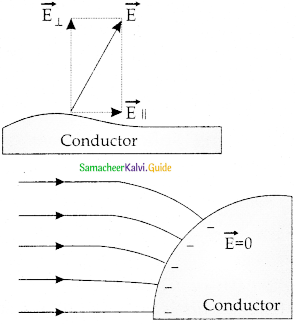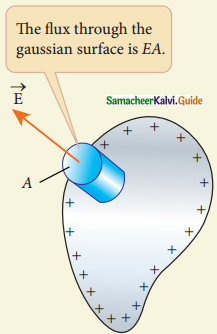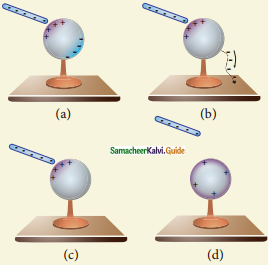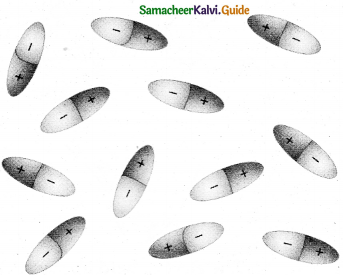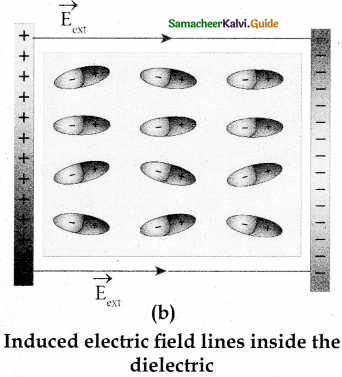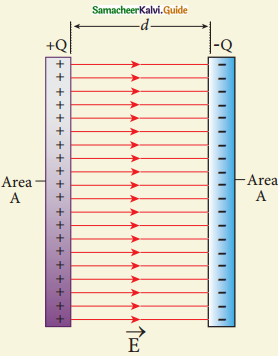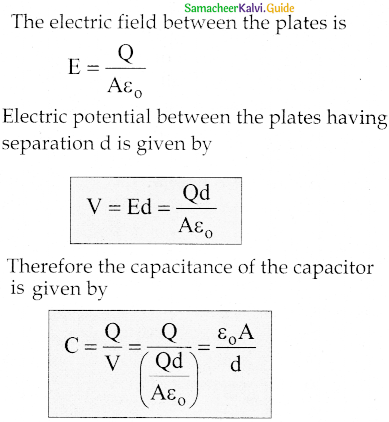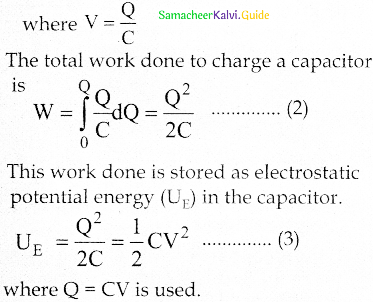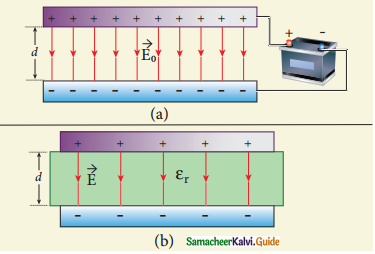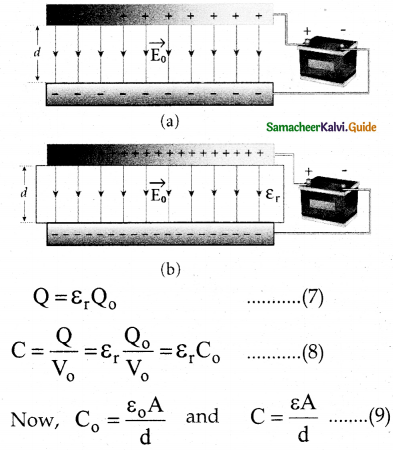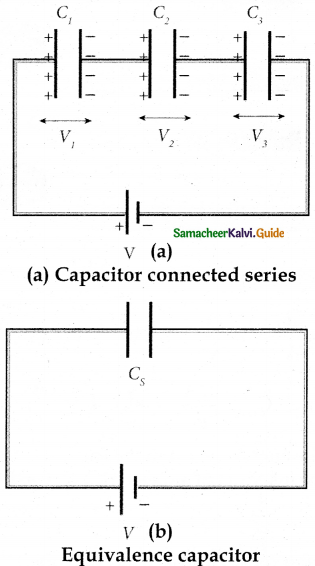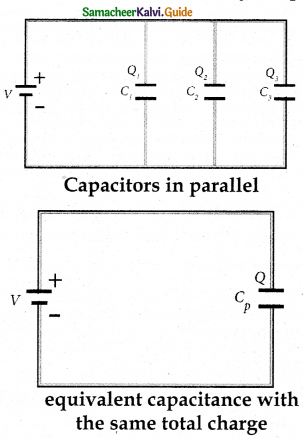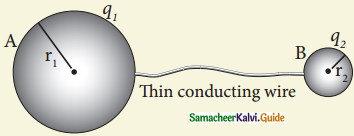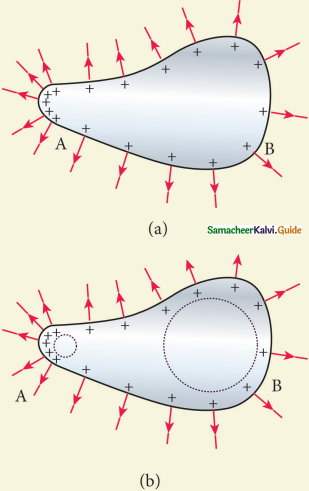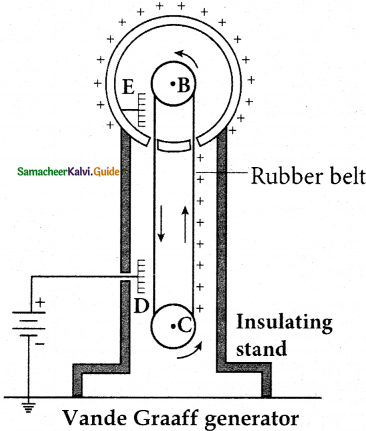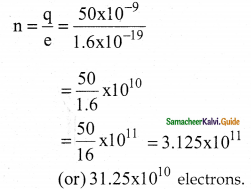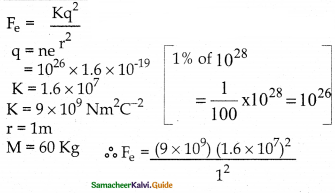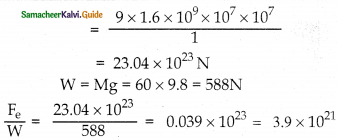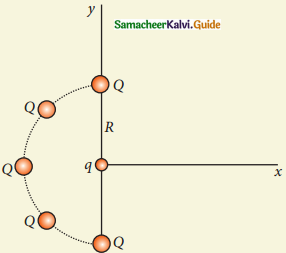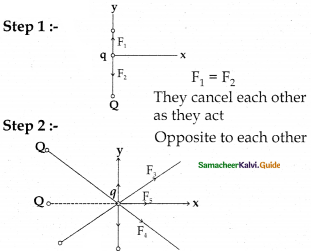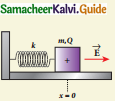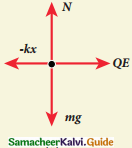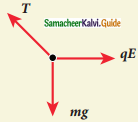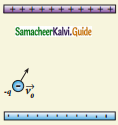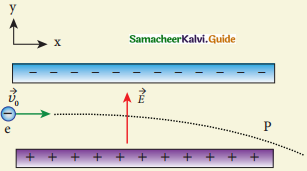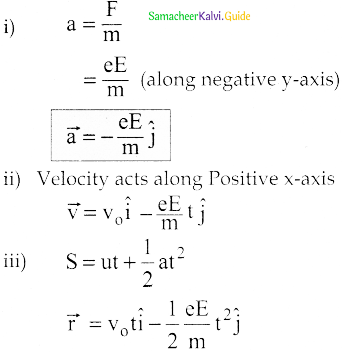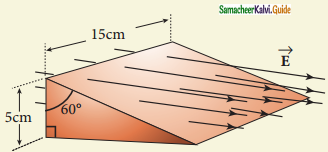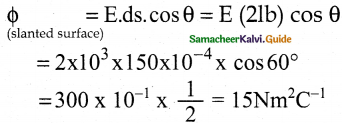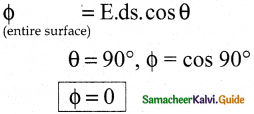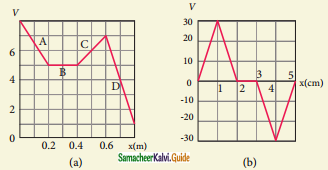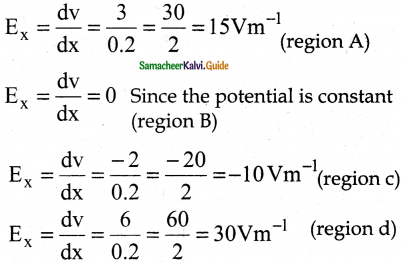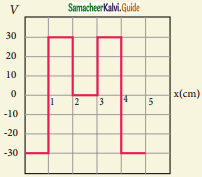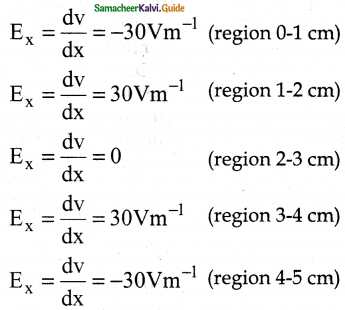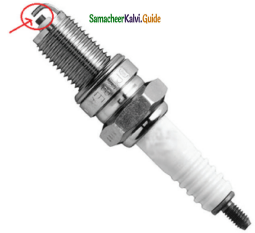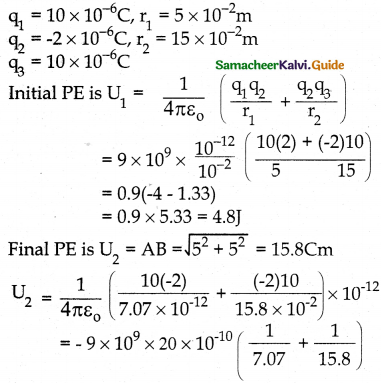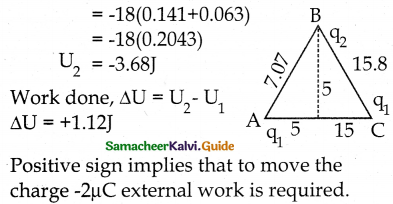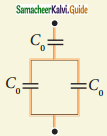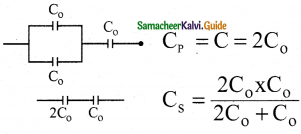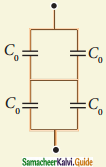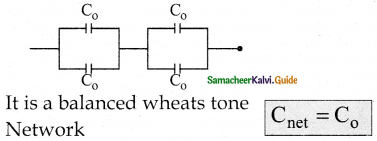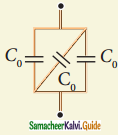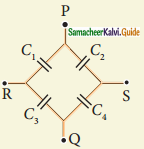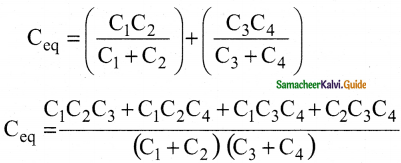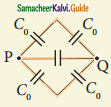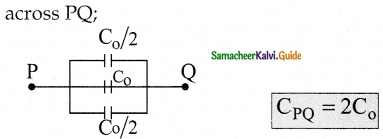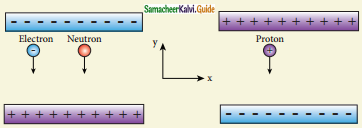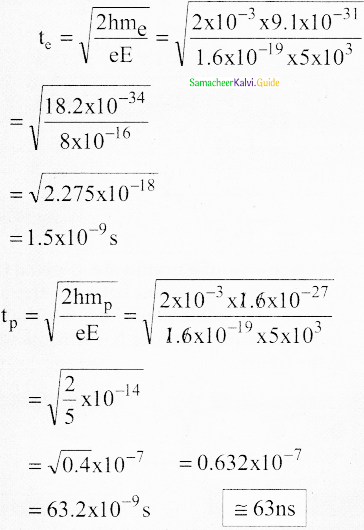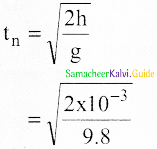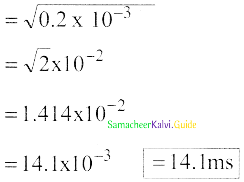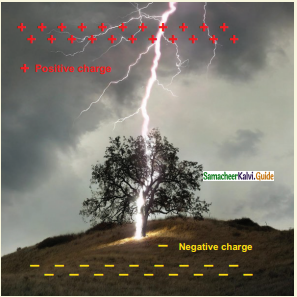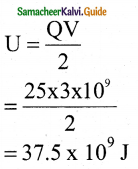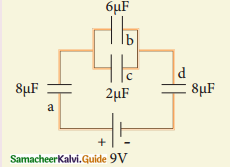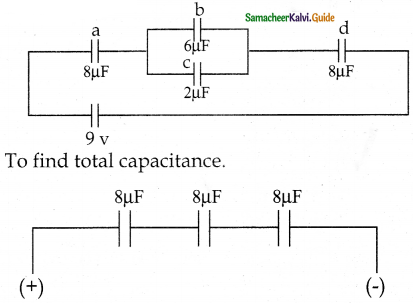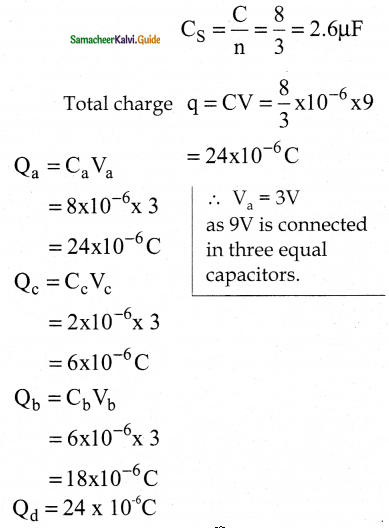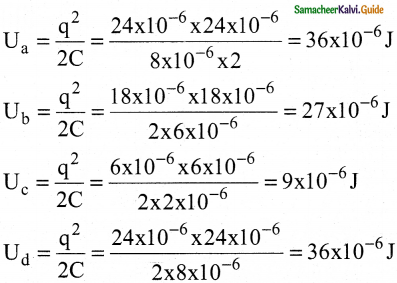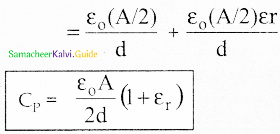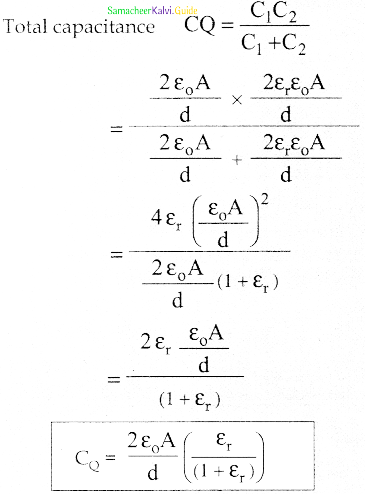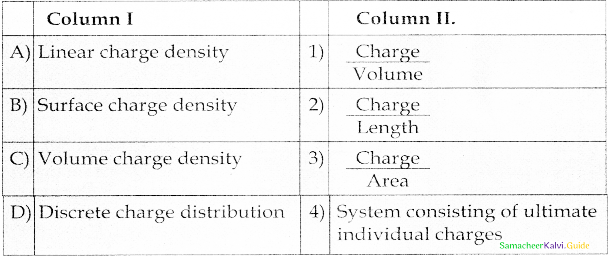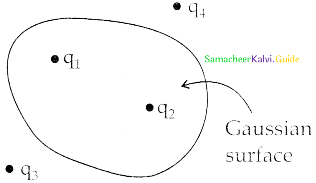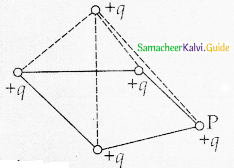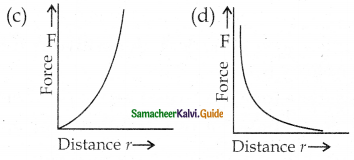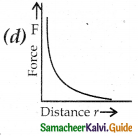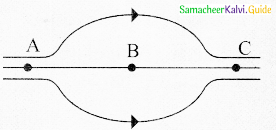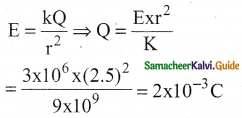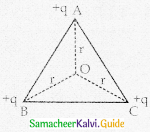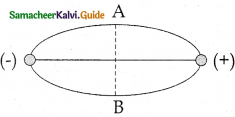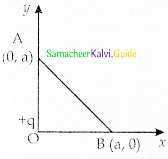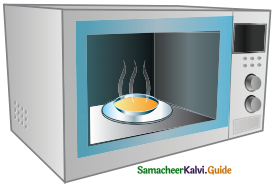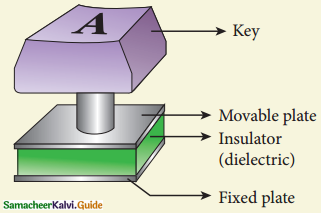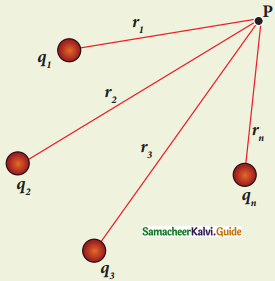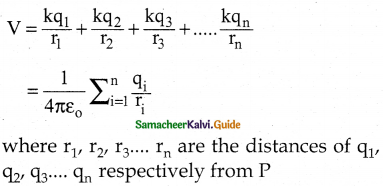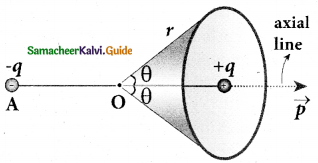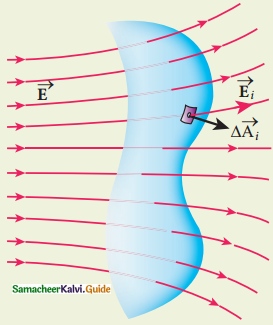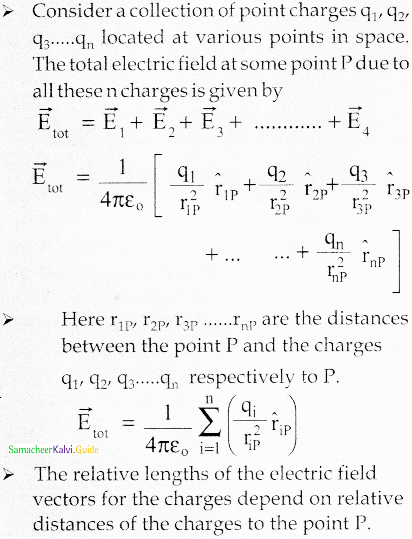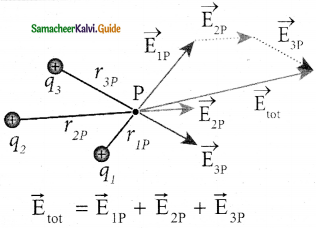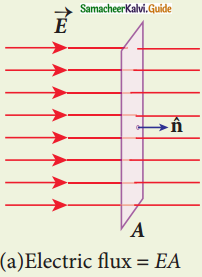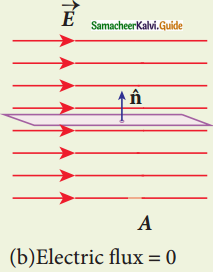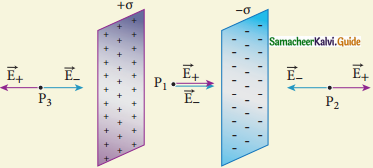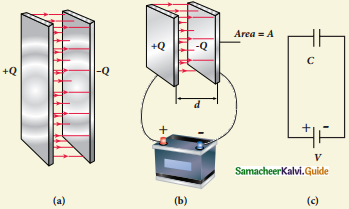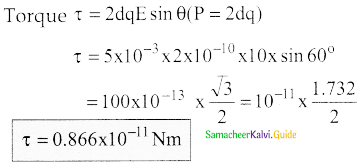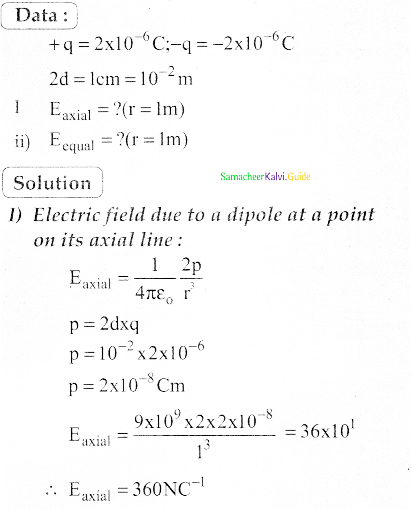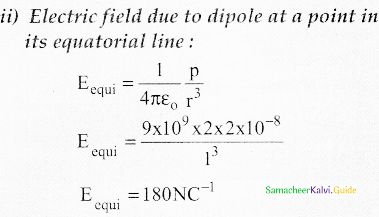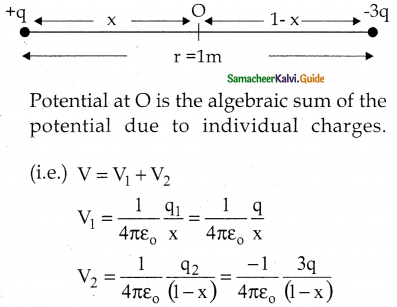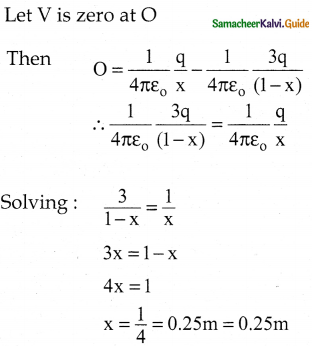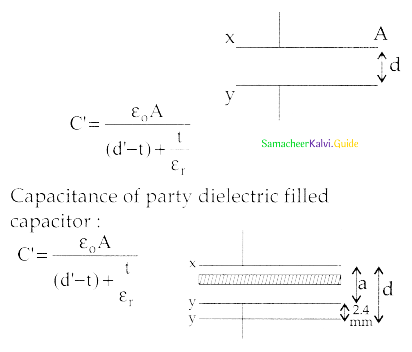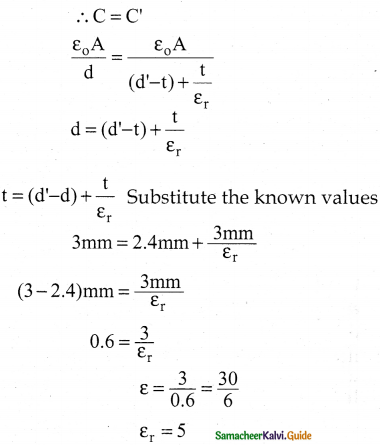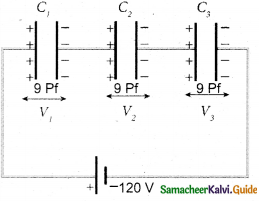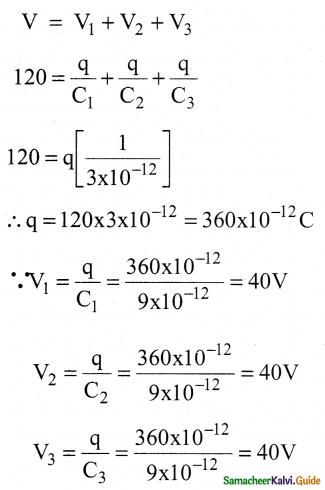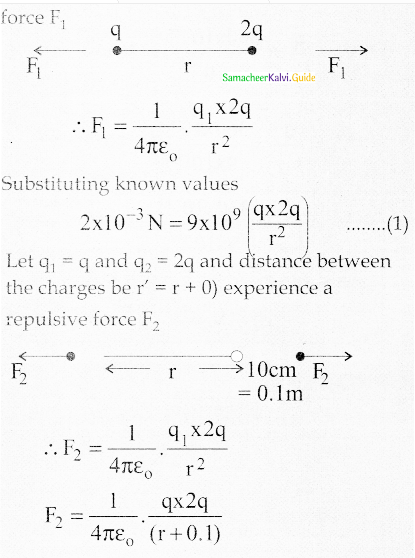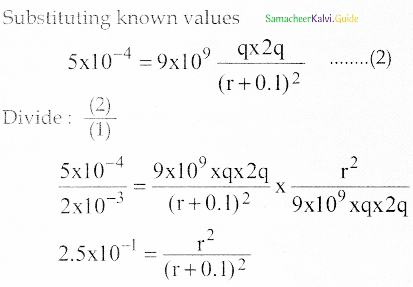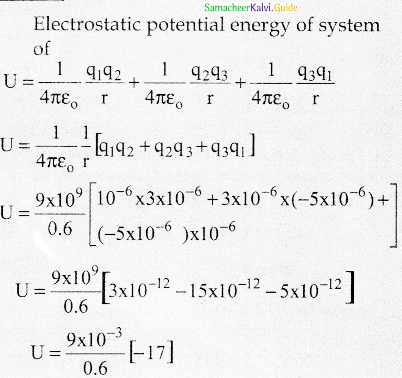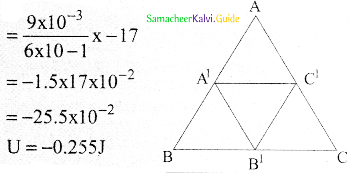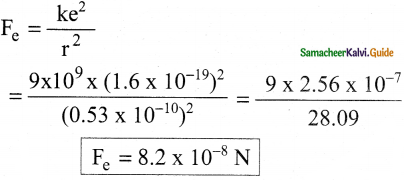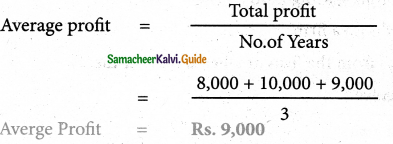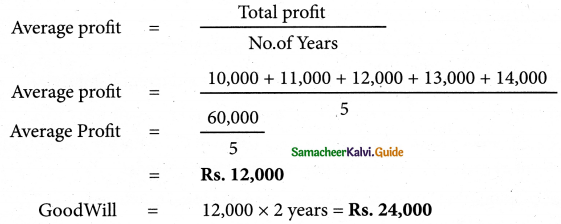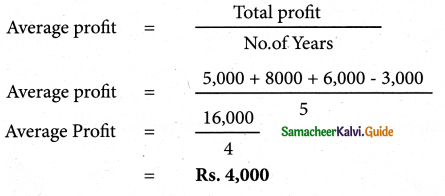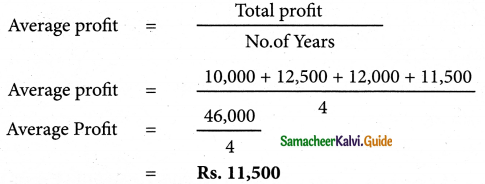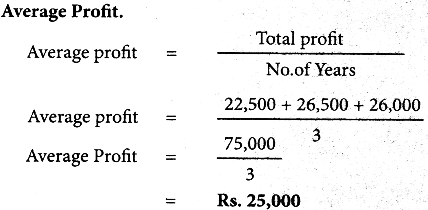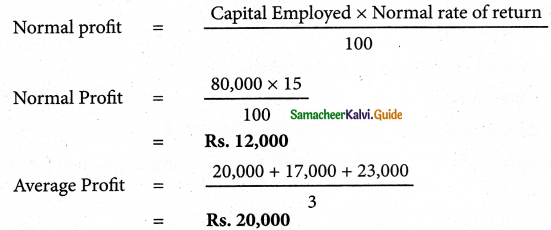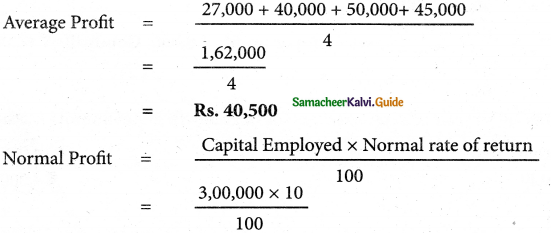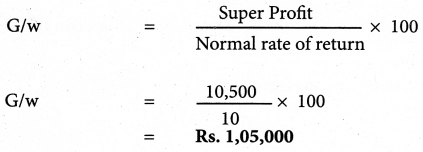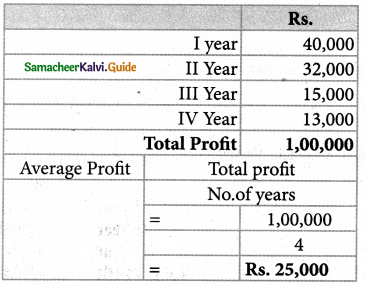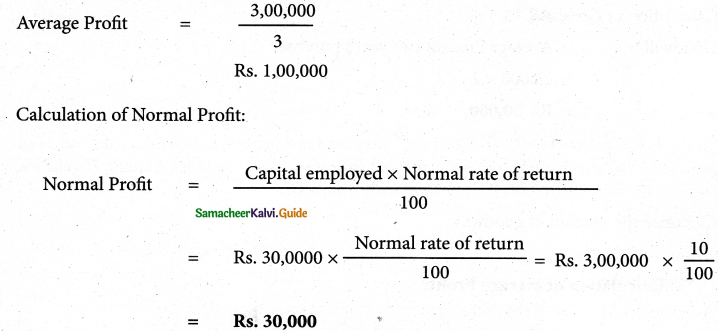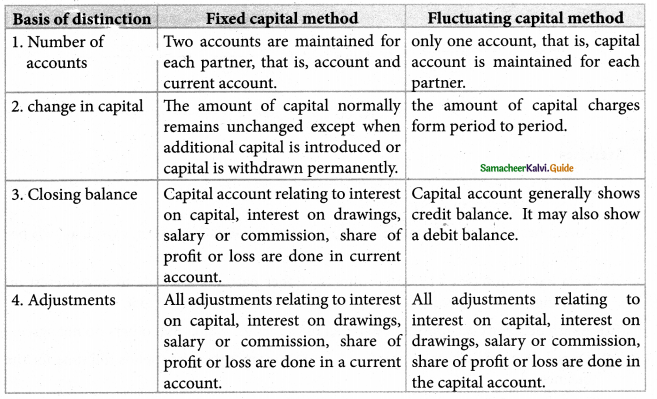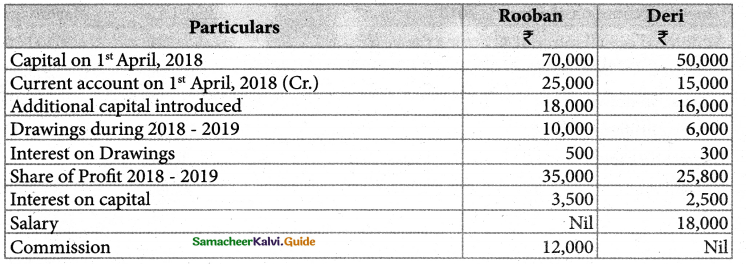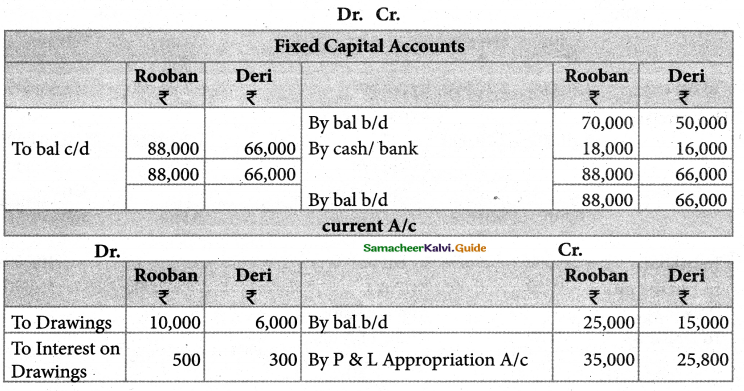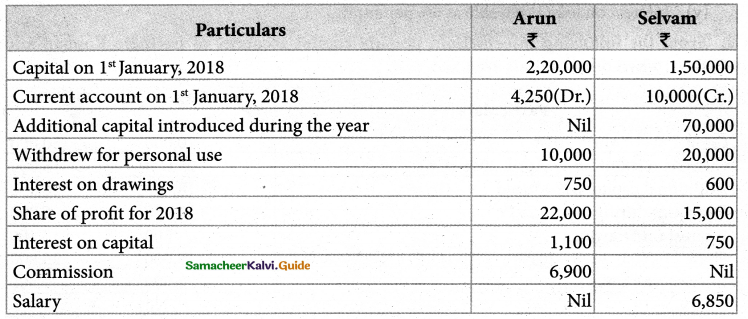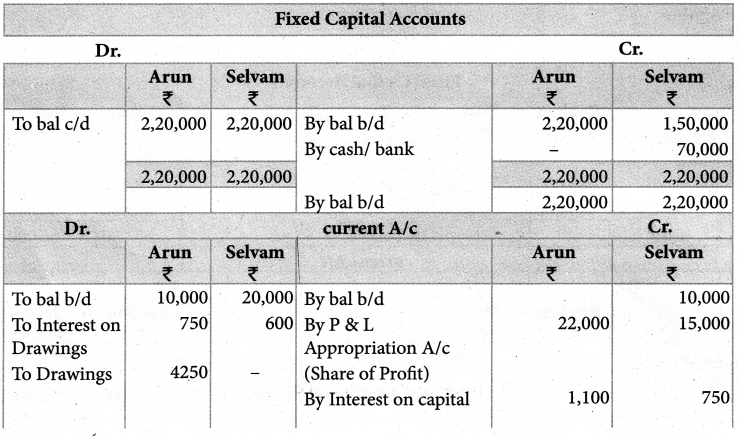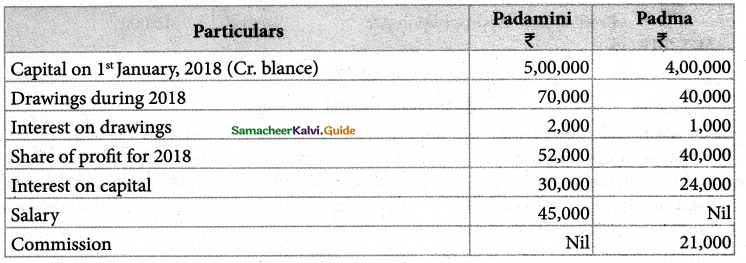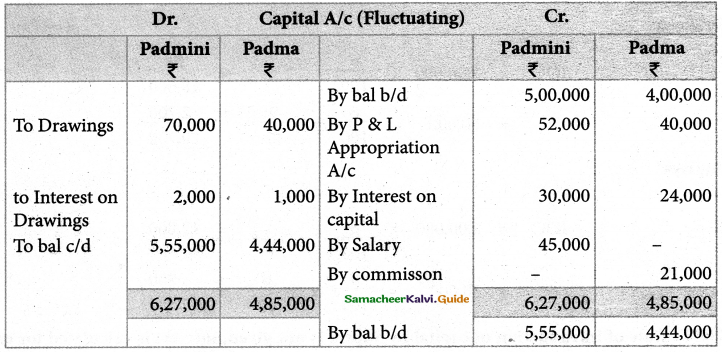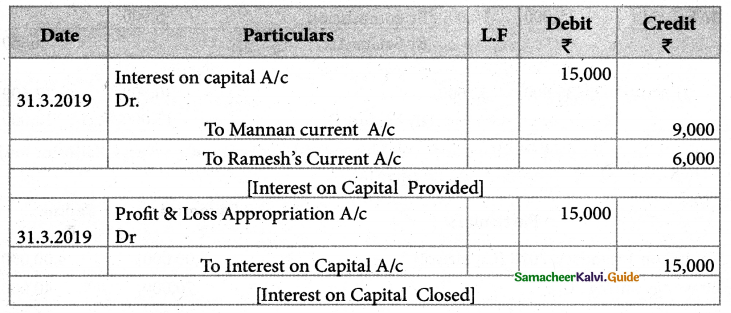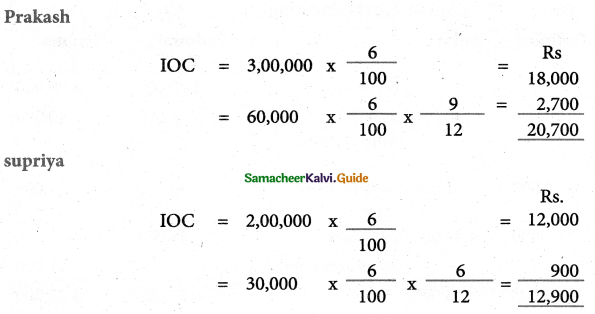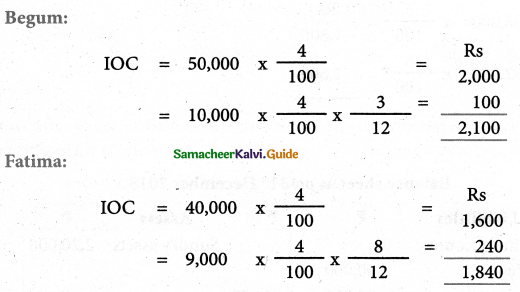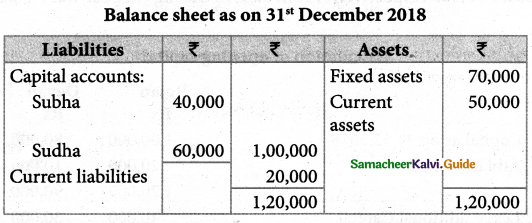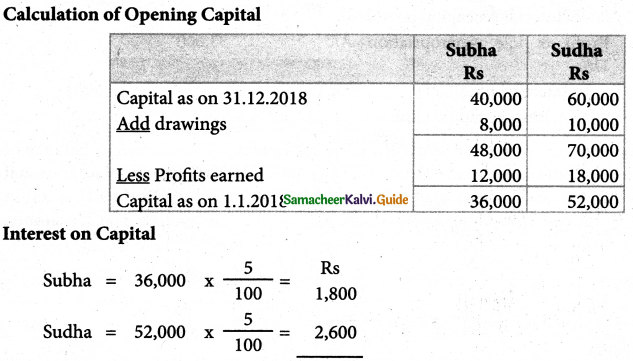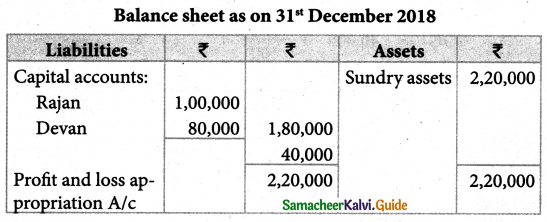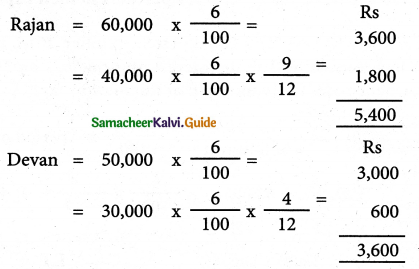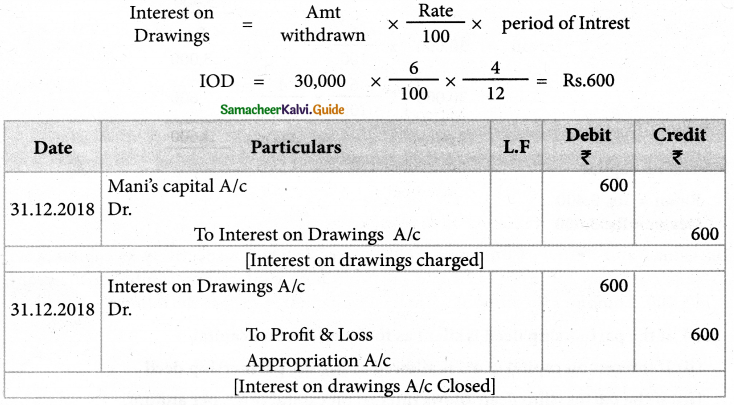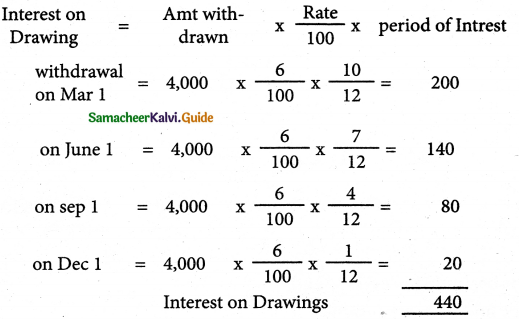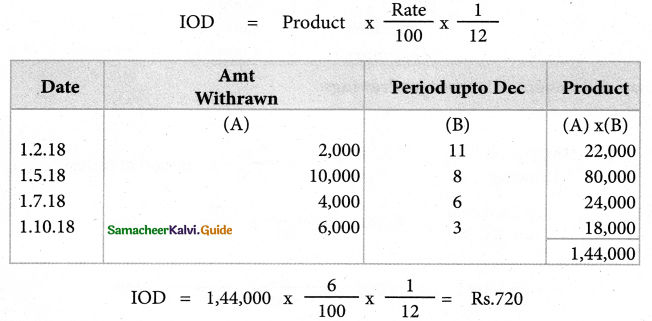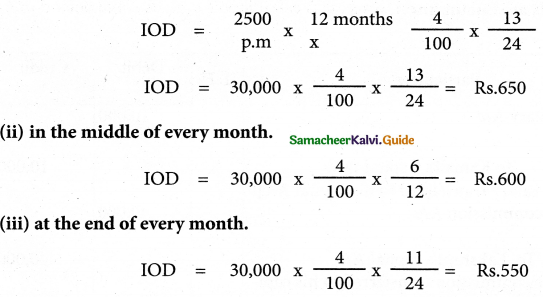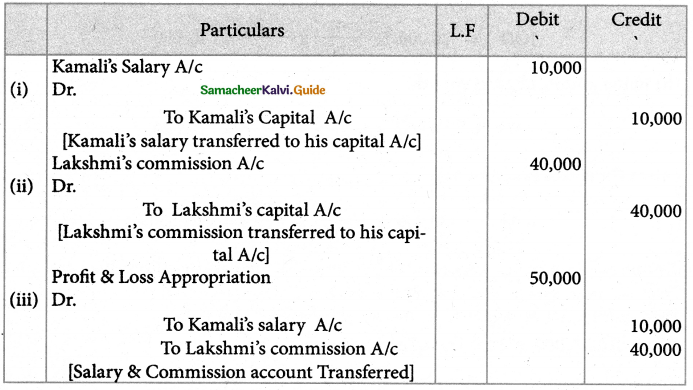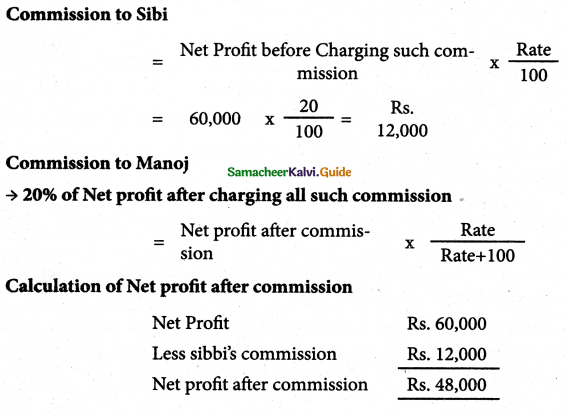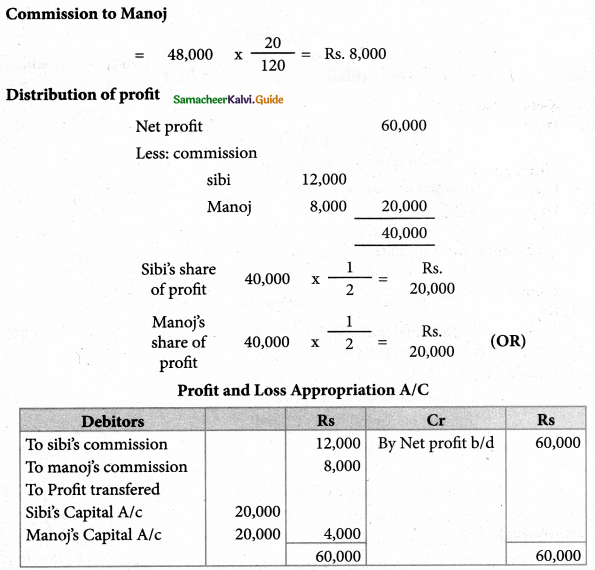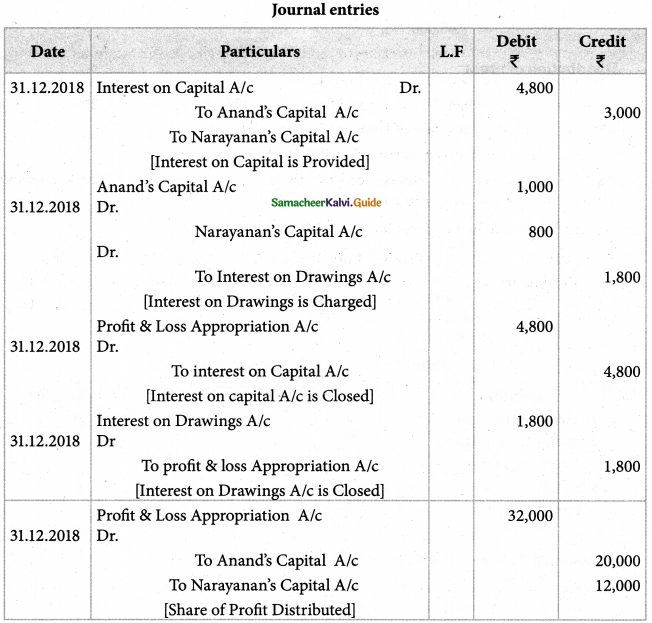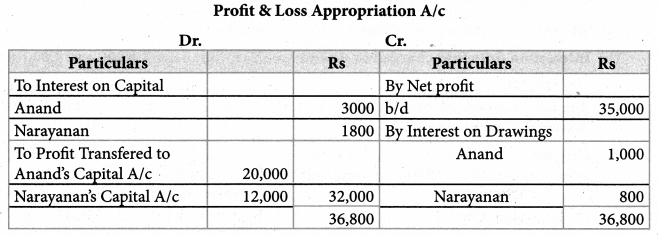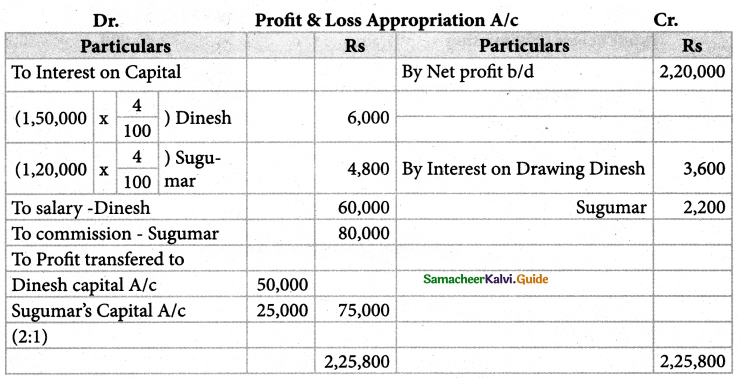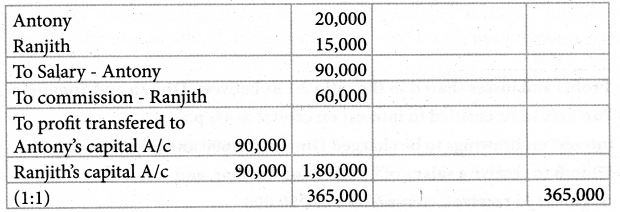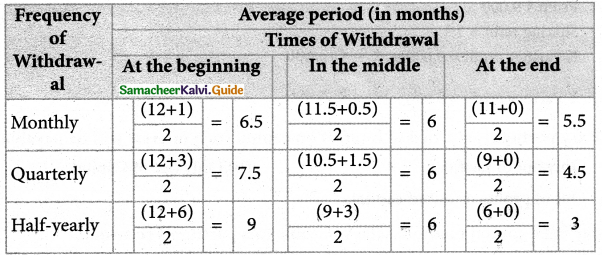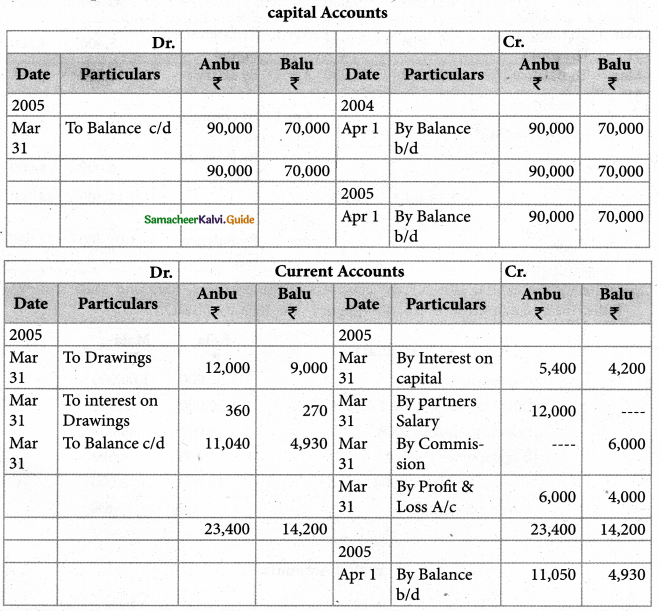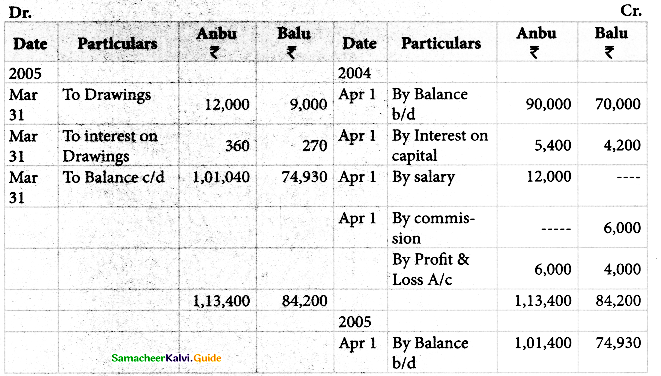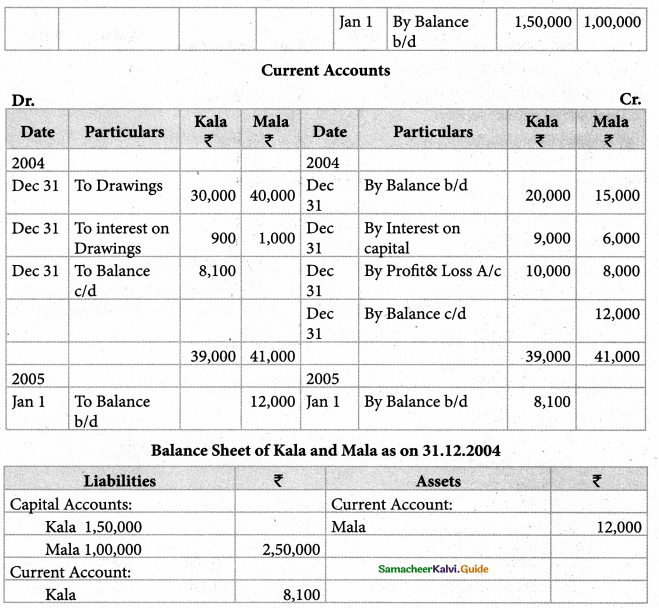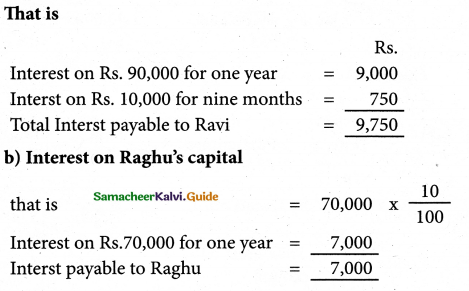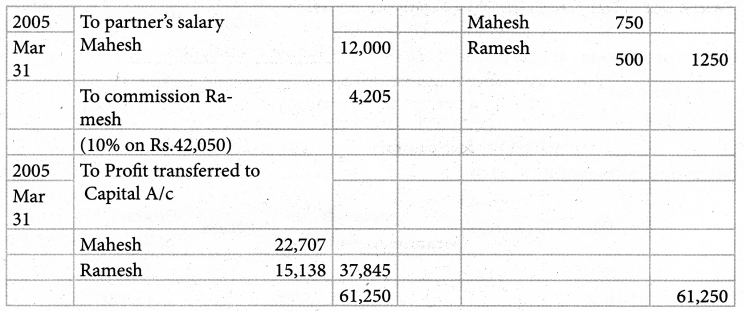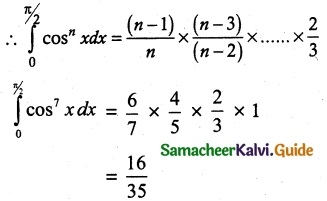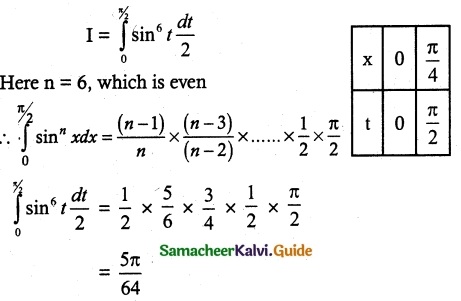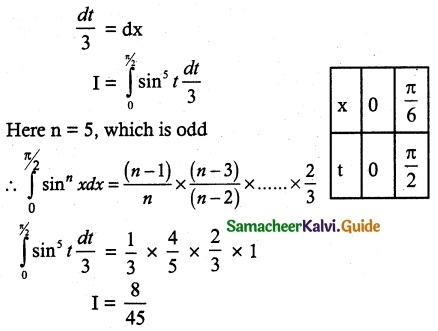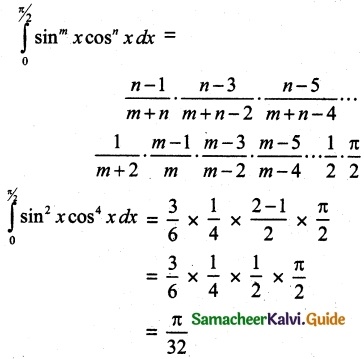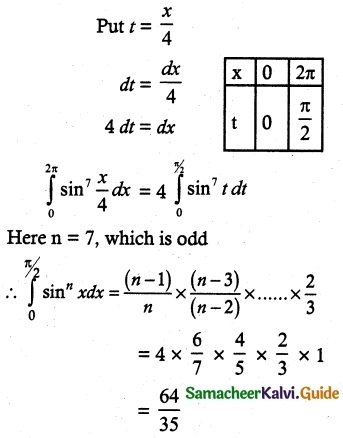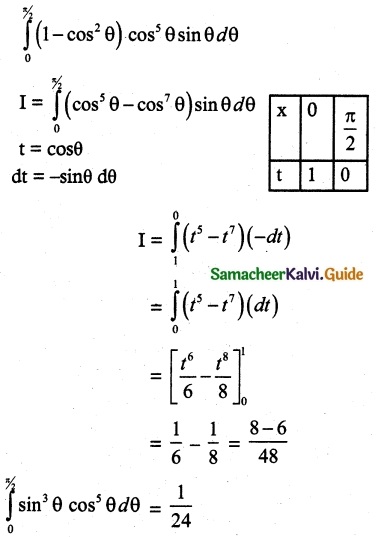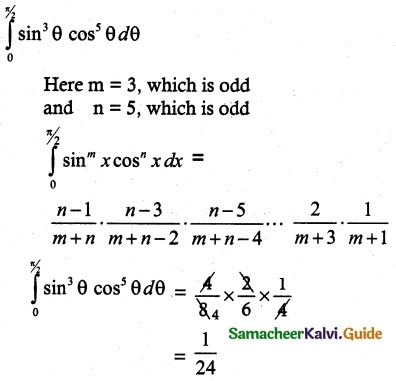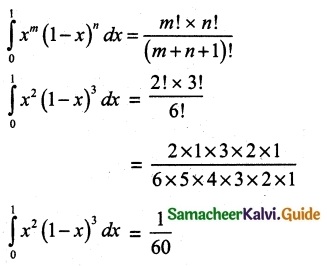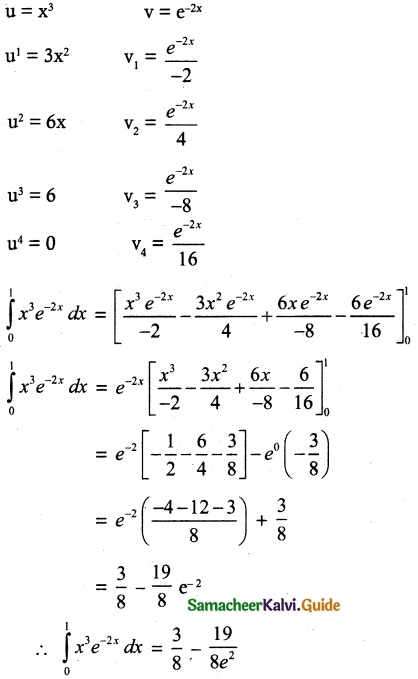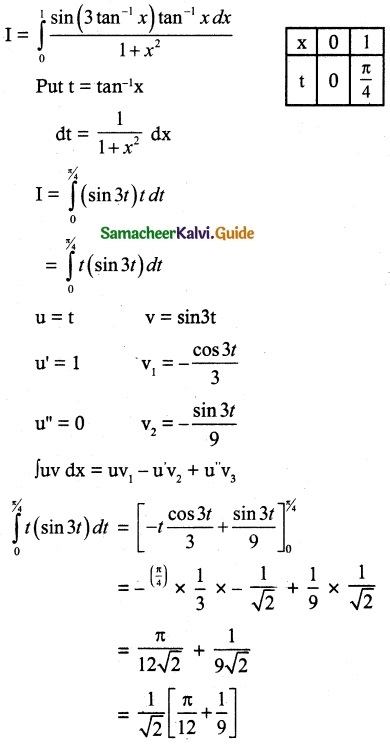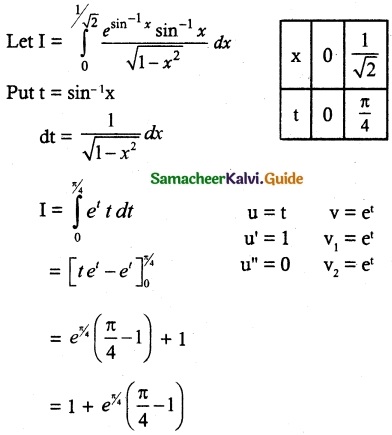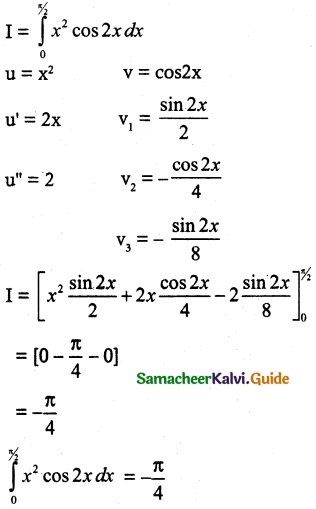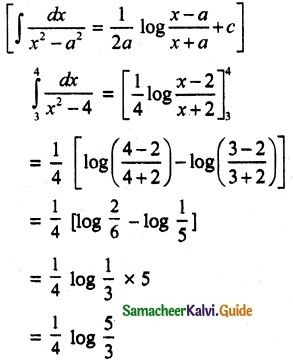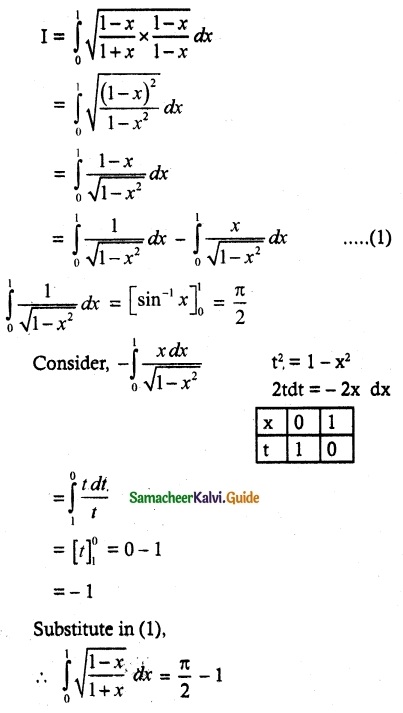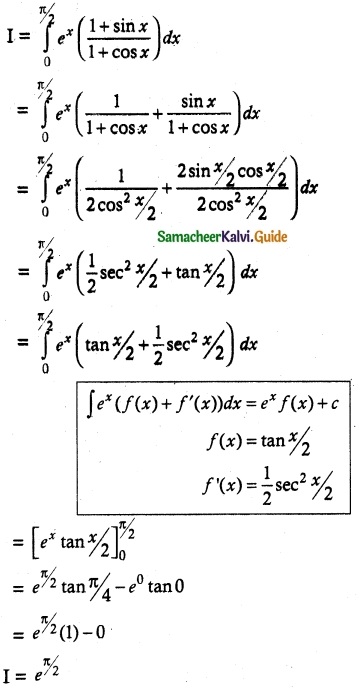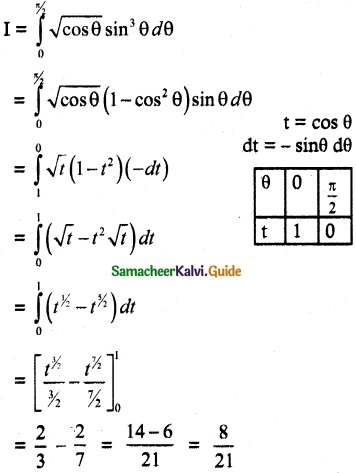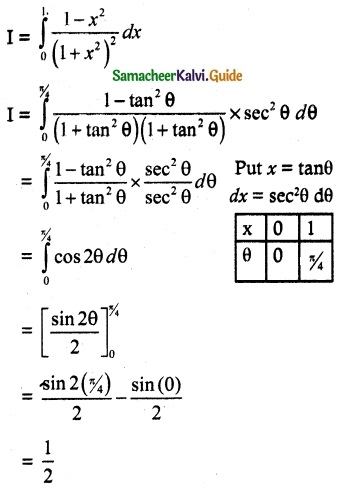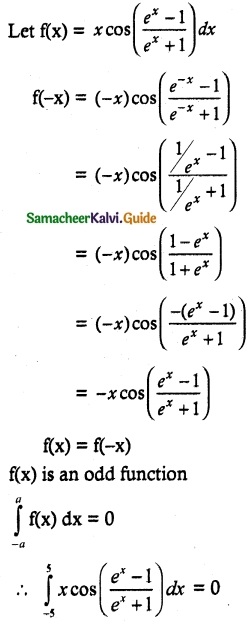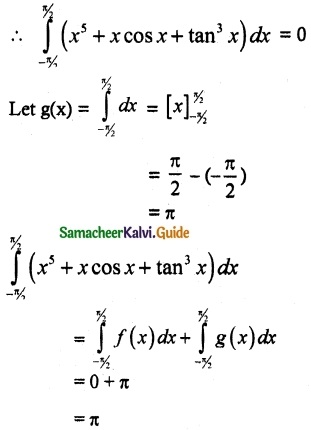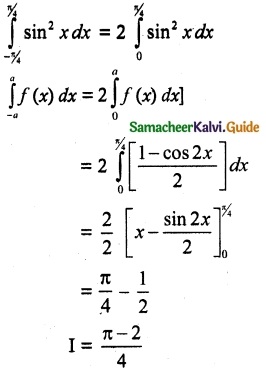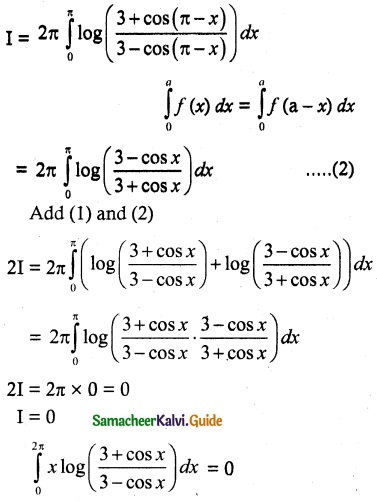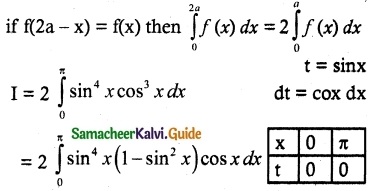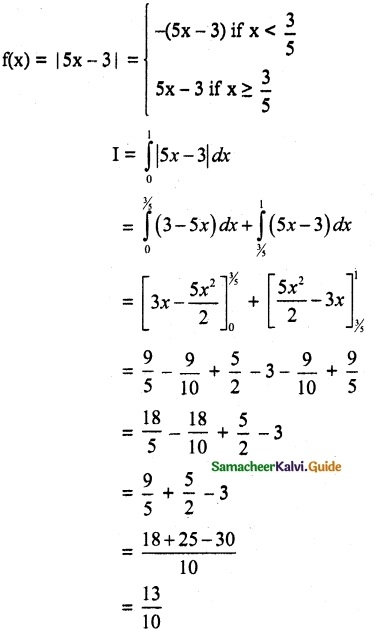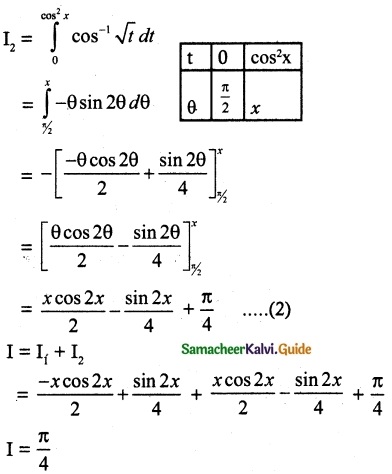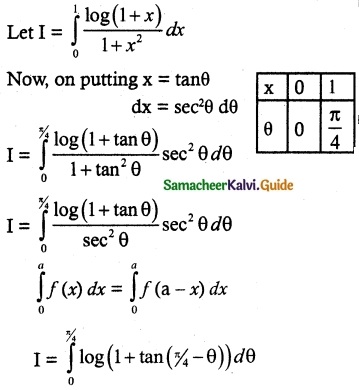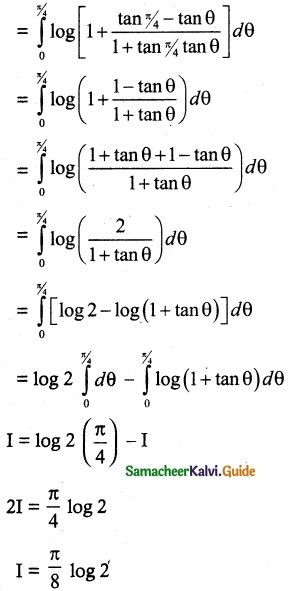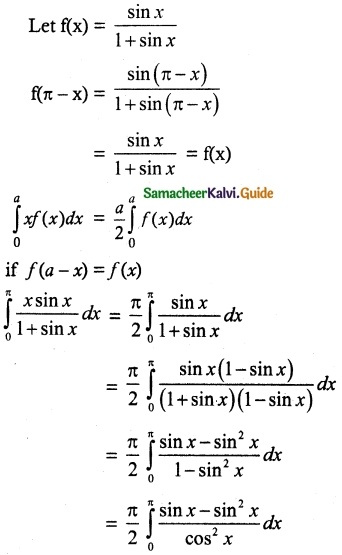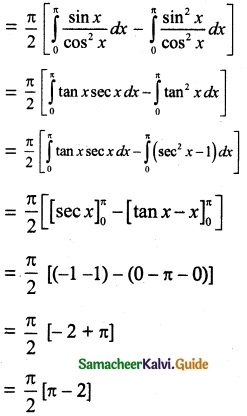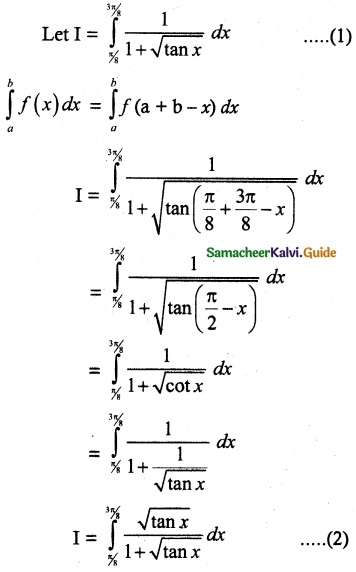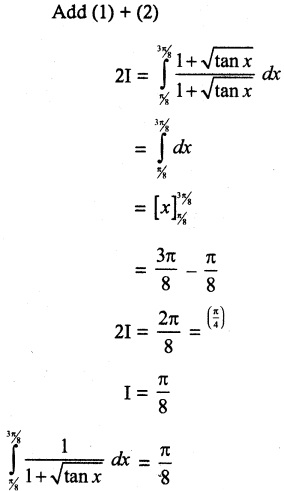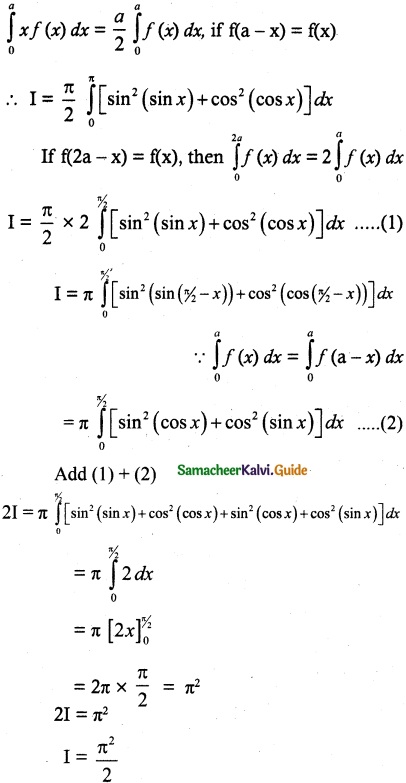Tamilnadu State Board New Syllabus Samacheer Kalvi 12th Chemistry Guide Pdf Chapter 4 Transition and Inner Transition Elements Text Book Back Questions and Answers, Notes.
Tamilnadu Samacheer Kalvi 12th Chemistry Solutions Chapter 4 Transition and Inner Transition Elements
12th Chemistry Guide Transition and Inner Transition Elements Text Book Questions and Answers
Part – I – Text Book Evaluation
I. Choose the correct answer
1. Sc (Z = 21) is a transition element but Zinc (Z = 30) is not because
a) both Sc3+ and Zn2+ ions are colourless and form white compounds
b) in case of Sc, 3d orbital are partially filled but in Zn these are completely filled
c) last electron as assumed to be added to 4s level in case of zinc
d) both Sc and Zn do not exhibit variable oxidation states
Answer:
b) in case of Sc, 3d orbital are partially filled but in Zn these are completely filled
2. Which of the following d block element has half-filled penultimate d sub shell as well as half-filled valence sub shell?
a) Cr
b) Pd
c) Pt
d) none of these
Answer:
a) Cr
![]()
3. Among the transition metals of 3d series, the one that has highest negative \(\left(\mathrm{M}^{2+} / \mathrm{M}\right)\) standard electrode potential is
a) Ti
b) Cu
c) Mn
d) Zn
Answer:
a) Ti
4. Which one of the following ions has the same number of unpaired electrons as present in V3+?
a) Ti3+
b) Fe3+
c) Ni2+
d) Cr3+
Answer:
c) Ni2+
5. The magnetic moment of Mn2+ ion is
a) 5.92BM
b) 2.80BM
c) 8.95BM
d) 3.90BM
Answer:
a) 5.92BM
6. The catalytic behaviour of transition metals and their compounds is ascribed mainly due to
a) their magnetic behaviour
b) their unfilled d orbitals
c) their ability to adopt variable oxidation states
d) their chemical reactivity
Answer:
c) their ability to adopt variable oxidation states
7. The correct order of increasing oxidizing power in the series

Answer:
a)VO2+ < Cr2O72- < MnO4–
8. In acid medium, potassium permanganate oxidizes oxalic acid to
a) oxalate
b) Carbon dioxide
c) acetate
d) acetic acid
Answer:
b) Carbon dioxide
9. Which of the following statements is not true?
a) on passing H2S, through acidified K2Cr2O7 solution, a milky colour is observed
b) Na2Cr2O7 is preferred over K2Cr2O7 in volumetric analysis
c) K2Cr2O7 solution in acidic medium is orange in colour
d) K2Cr2O7 solution becomes yellow on increasing the pH beyond 7
Answer:
b) Na2Cr2O7 is preferred over K2Cr2O7 in volumetric analysis
10. Permanganate ion changes to ________ in acidic medium
a) MnO42-
b) Mn2+
c) Mn3+
d) MnO2
Answer:
b) Mn2+
11. How many moles of I2 are liberated when 1 mole of potassium dichromate react with potassium iodide?
a) 1
b) 2
c) 3
d) 4
Answer:
c) 3
12. The number of moles of acidified KMnO4 required to oxidize 1 mole of ferrous oxalate (FeC2O4) is
a) 5
b) 3
c) 0.6
d) 1.5
Answer:
c) 0.6
13. Which one of the following statements related to lanthanons is incorrect?
a) Europium shows +2 oxidation state
b) The basicity decreases as the ionic radius decreases from Pr to Lu.
c) All the lanthanons are much more reactive than aluminium.
d) Ce4+ solutions are widely used as oxidising agents in volumetric analysis.
Answer:
c) All the lanthanons are much more reactive than aluminium.
14. Which of the following lanthanoid ions is diamagnetic?
a) Eu2+
b) Yb2+
c) Ce2+
d) Sm2+
Answer:
b) Yb2+
15. Which of the following oxidation states is most common among the lanthanoids?
a) 4
b) 2
c) 5
d) 3
Answer:
d) 3
16. Assertion : Ce4+ is used as an oxidizing agent in volumetric analysis
Reason : Ce4+ has the tendency of attaining +3 oxidation state.
a) Both assertion and reason are true and reason is the correct explanation of assertion.
b) Both assertion and reason are true but reason is not the correct explanation of assertion.
c) Assertion is true but reason is false
d) Both assertion and reason are false.
Answer:
a) Both assertion and reason are true but reason is the correct explanation of assertion.
17. The most common oxidation state of actinoids is (PTA -2)
a) +2
b) +3
c) +4
d) +6
Answer:
b) +3
![]()
18. The actinoid elements which show the highest oxidation state of +7 are
a) Np, Pu, Am
b) Li, Fm, Th
c) U, Th, Md
d) Es, No, Lr
Ans : a) Np, Pu, Am
19. Which one of the following is not correct? (PTA -5)
a) La (OH)3, is less basic than Lu (OH)3
b) In lanthanoid series ionic radius of Ln3+ ions decreases
c) La is actually an element of transition metal series rather than lanthanide series
d) Atomic radii of Zr and Hf are same because of lanthanide contraction,
Answer:
a) La(OH)3, is less basic than Lu(OH)3
II. Answer the following questions
Question 1.
What are transition metals? Give four examples (PTA – 3)
Answer:
- Transition metal is an element whose atom has an incomplete d sub shell or which can give rise to cations with an incomplete d sub shell.
- They occupy the central position of the periodic table, between s-block and p-block elements.
- Their properties are transitional between highly reactive metals of s-block and elements of p-block which are mostly non-metals.
- Example – Iron, Copper, Tungsten, Titanium.
Question 2.
Explain the oxidation states of 4d series elements.
Answer:
- The oxidation states of 4d series elements vary from +3 for Y to +8 for Ru.
- The highest oxidation state of 4d elements are found in their compounds with higher electronegative elements like O, F and Cl.
- Ex: In RuO4, the oxidation state of Ru is +8.
Question 3.
What are inner transition elements?
Answer:
1. The inner transition elements have two series of elements.
- Lanthanoids
- Actinoids
2. Lanthanoid series consists of 14 elements from Cerium (58Ce) to Lutetium (71Lu) following Lanthanum (57La). These elements are characterised by the preferential filling of 4f orbitals. .
3. Actinoids consists of 14 elements from Thorium (90Th) to Lawrencium (103Lr) following Actinium (89Ac). These elements are characterized by the preferential filling of 5f orbital.
The elements which in their elemental or ionic form have partly filled f orbitals are called f block elements.
As the f orbitals lie inner to the penultimate shell, therefore these elements having partially filled f orbitals, are also called inner transition elements.
Question 4.
Justify the position of lanthanides and actinides in the periodic table. (PTA – 1)
Answer:
Lanthanides:
- The actual position of lanthanides in the periodic table is at group number 3 and period number 6.
- In the sixth period, the electrons are preferentially filled in inner 4f-sub shell.
- The fourteen elements following lanthanum (Ce to Lu) show similar chemical properties.
- Hence they are grouped together and placed at the bottom of the periodic table.
- This position is justified as follows:
(1) General electronic configuration:
[ Xe] 4f1-145d0,16S²
(2) Common Oxidation state: +3
(3) They have similar physical and chemical properties.
Actinides:
- The actual position of actinides in the periodic table is at group number 3 and period number 7.
- In the seventh period, the electrons are perferentially filled in inner 5f-Sub shell.
- The fourteen elements following actinides (Th to Lr) show similar chemical properties.
- Hence they are grouped together and placed at the bottom of the periodic table.
- This position is justified as follows:
(1) General electronic configuration:
[Rn] 5f2-146d0-27S²
(2) Common oxidation state: +3
(3) They have similar physical and chemical properties.
Question 5.
What are actinides? Give three examples.
Answer:
The fourteen elements following actinium is from thorium to lawrencium are called actinoids.
Examples: Thorium, uranium, Neptunium.
Question 6.
Describe the preparation of potassium dichromate. (PTA – 2)
Answer:
- The fourteen elements following actinium ,i.e., from thorium (Th) to lawrentium (Lr) are called actinoids.
- All the actinoids are radioactive and most of them have short half lives.
- The heavier members being extremely unstable and not of natural occurrence. They are produced synthetically by the artificial transformation of naturally occuring elements by nuclear reactions.
- Example – Thorium, Uranium, Plutonium, Californium.
Question 7.
What is lanthanide contraction and what are the effects of lanthanide contraction? (PTA – 3)
Answer:
As we move across 4f series, the atomic and ionic radii of lanthanoids show gradual decrease with increase in atomic number. This decrease in ionic size is called lanthanide contraction.
Consequences:
Basicity differences:
As we from Ce3+ to Lu3+, basic character of LU3+ ions decrease. Due to the decrease in the size of LU3+ ions, the ionic character of Ln-OH bond decreases (covalent character increases)
Similarities among lanthanoids:
In the complete f-series very small change in radii of Lanthanoids are observed and their chemical properties a requite similar.
Second and third transition series resemble each other due to lanthanide contraction.
Question 8.
Complete the following.
Answer:
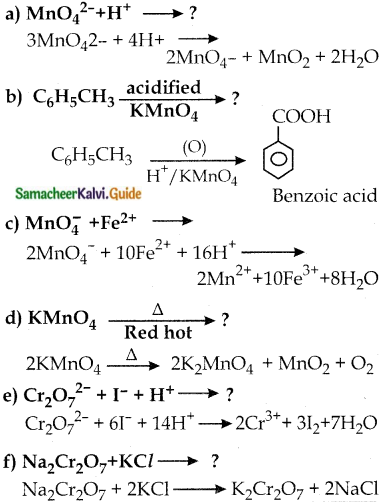
Question 9.
What are interstitial compounds?
Answer:
An interstitial is a compound that is formed when small atoms like hydrogen, boron, carbon or nitrogen are trapped in the interstitial holes in a metal lattice. They are non-stoichiometric compounds.
Ex: Tic, ZrH1.92
Question 10.
Calculate the number of unpaired electrons in Ti3+, Mn2+, and calculate the spin-only magnetic moment.
Answer:
Electronic configuration of Ti3+ = [Ar]3d¹
It has only one unpaired electron, ie. n = 1
Spin only magnetic moment
\(=\sqrt{\mathrm{n}(\mathrm{n}+2)}=\sqrt{1(1+2)}=\sqrt{3}\) = 1.732BM
Electronic configuration of Mn2+ = [Ar] 3d5
It has five unpaired electrons ie. n = 5
Spin only magnetic moment
\(=\sqrt{n(n+2)}=\sqrt{5(5+2)}=\sqrt{35}\) = 5.92BM
Question 11.
Write the electronic configuration of Ce4+ and Co2+
Answer:
Electronic cofiguration of Ce4+ = [Xe] 4f05d06s0
Electronic configuration of Co2+ = [Ar] 3d7.
Question 12.
Explain briefly +2 states become more and more stable in the first half of the first-row transition elements with increasing atomic number.
Answer:
In the elements of the first half of the first row, with the removal of valance 4s electrons (+2 oxidation state) the 3d orbital get gradually occupied. Since the number of empty d orbital decreases, the stability of the cations (M2+) increases from Sc2+ to Mn2+.
![]()
Question 13.
Which is more stable? Fe3+ or Fe2+ – explain.
Answer:
- Electronic configuration of Fe3+ = [Ar] 3d5. It consists of 5 unpaired electrons. Half filled and stable.
- Electronic configuration of Fe2+ = [Ar]3d6. It consists of 4 unpaired electrons, partially filled d subshell.
- Hence Fe3+ is more stable than Fe2+.
Question 14.
Explain the variation in E°M3+/M2+ 3d series.
Answer:
Transition metals in their high oxidation states tend to be oxidising. The standard reduction potential for the M3+/M2+ half cell gives the relative stability between M3+ and M2+.
| Reaction | Standard reduction potential (V) |
| Ti3+ +e– → Ti2+ | -0.37 |
| y3+ + e– → V2+ | -0.26 |
| Cr3+ +e– → Cr2+ | -0.41 |
| Mn3+ + e– → Mn2+ | +1.51 |
| Fe3+ + e– → Fe2+ | +0.77 |
| Co3+ + e– → Co2+ | +1.81 |
The negative values for titanium, vanadium and chromium indicate that the higher oxidation state is preferred.
The high reduction potential of M3+/M2+ indicates Mn2+ is more stable than Mn3+
Question 15.
Compare lanthanides and actinides.
Answer:
|
Lanthanides |
Actinides |
| 1. Differentiating electron enters in 4f orbital | The differentiating electron enters in 5f orbital |
| 2. Binding energy of 4f orbitals are higher | Binding energy of 5f orbitals are lower |
| 3. Do not form complexes | Form complex compounds |
| 4. Most of the lanthanoids are colourless | Must of the actinoids are coloured . U3+ red, U4+ Green, UO22+ Yellow |
| 5. They do not form oxocations. | They form oxocations Ex. UO22+ |
| 6. Maximum oxidation state is +4 | Maximum oxidation state is +7 |
Question 16.
Explain why Cr2+ is slrongly reducing while Mn3+ is strongly oxidizing. (PTA – 5)
Answer:
E° value for Cr3+/Cr2+ is negative (-0.41 V), where as E° Value for Mn3+/Mn2+ is positive (+1.57V).
Hence Cr2+ ions can easily undergo oxidation to give Cr3+ ions and therefore, acts as strong reducing agent. On the otherhand, Mn3+ can easily undergo reduction to give Mn2+ and hence acts as oxidising agent.
Question 17.
Compare the ionization enthalpies of first series of the transition elements.
Answer:
- Ionisation energy of transition element is intermediate between those of s and p block elements.
- As we move from left to right in a transition metal series, the ionisation enthalpy increase.
- This is due to the increase in nuclear charge corresponding to the filling of d electrons.
- The following figure shows the trends in ionisation enthaply of first series of transiton elements.
| In 3d series moving from | Ionisation energy |
| Sc to Ti | increases |
| Ti to Cr | no change |
| Cr to Mn and Fe | increases |
| Fe to Co, Ni and Cu | not much change |
| Cu to Zn | increases |
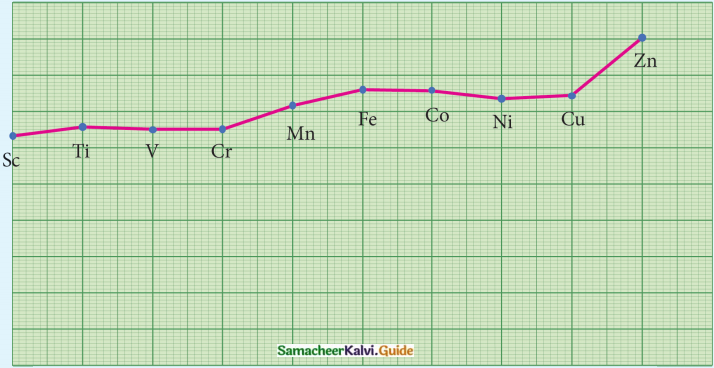
Question 18.
Actinoid contraction is greater from element to element than the lanthanoid contraction why?
Answer:
This is due to poor shielding by 5f electrons in actinoids as compared to that by 4f electrons in lanthanoids.
![]()
Question 19.
Out of Lu(OH)3 and La(OH)3 which is more basic and why?
Answer:
| La(OH)3 | Lu(OH)3 |
| 1. Size of La3+ ion is larger | Size Lu3+ ion is smaller |
| 2. La-OH is more ionic | Lu-OH is less ionic |
| 3. La-OH bond is less covalent | Lu-OH bond is more covalent |
| 4. Hence La(OH)3 is. more basic. | Hence Lu(OH)3 is. less basic. |
Question 20.
Why europium (II) is more stable than cerium (II)
Answer:
| Ion | Cerium (II) | Europium (II) |
| Electronic configuration | [Xe] 4f15d1 6So | [Xe] 4f75d°6S° |
| Nature of Orbitals | PartialK filled unstable d orbitals and f – orbitals | Mall filled stable f-orbitals |
| Stability of ion | Less stable | More stable |
Question 21.
Why do zirconium and Hafnium exhibit similar properties?
Answer:
This is because Zr and Hf have similar atomic sizes which is due to lanthanoid contraction.
Question 22.
Which is stronger reducing agent Cr2+ or Fe2+?
Answer:
Cr2+ is a stronger reducing agent than Fe.
Reason :
E°(Cr3+/Cr2+) is negative (-0.41 V) where as E°(Fe3+/Fe2+) is positive (+0.77V). Thus Cr3+ is easily oxidised to Cr3+ but Fe2+ cannot be easily oxidised to Fe3+. Hence Cr2+ is a stronger reducing agent than Fe2+.
Question 23.
The E°M+/M value for copper is positive. Suggest a possible reason for this.
Answer:
E°M+/M for any metal depends upon the sum of the enthalpy changes taking place in the following steps.
M(s) + ∆H(a) → M(g) (∆H(a) = enthalpy of atomisation)
M(g) + ∆H(i) → M2+(g) (∆H(i) = ionisation enthalpy)
M2+(g) + ∆aq → M2+(aq) (∆H(Hyd) = hydration enthalpy)
Coppes possesses a high enthalpy of atomisation and low enthalpy of hydration. Hence E° Cu2+/ Cu is positive.
Question 24.
Describe the variable oxidation on state of 3d series elements.
Answer:
- First transition metal Sc exhibits only +3 oxidation state
- All other transition elements exhibit variable oxidation states by losing electrons from (n-l)d orbital and ns orbital
- Because the energy difference between these two orbitals is very small.
(ex)
| atom/ion | Electronic configuration |
| Fe | 3d64S2 |
| Fe2+ | 3d64S0 |
| Fe3+ | 3d54S0 |
- At the beginning of the series, +3 oxidation is stable.
- Number of oxidation states increases with the number of electrons available.
- Number of oxidation states decreases as the number of paired electrons increases.
- Hence the first and last elements show less number of oxidation states and the middle elements show more number of oxidation states.
- (Ex): First element Sc has only one oxidation state +3. Middle elements Mn has Six different oxidation states from +2 to +7. Last element Cu has +1 and +2 oxidation states.
- Relative stability of different oxidation states of 3d-metals is correlated with the extra stability of half filled and fully filled electronic configurations.
- (Ex): Mn2+(3d5) is more stable than Mn4+(3d3)
Question 25.
Which metal in the 3d series exhibits +1 oxidation state most frequently and why?
Answer:
Copper has electronic configuration 3d104s¹. It can easily lose 4s¹ electron to give the stable 3d10 configuration. Hence, it shows +1 oxidation state.
![]()
Question 26.
Why first ionization enthalpy of chromium is lower than that of Zinc.
Answer:
| Chromium | Zinc |
| i) Electronic configuration is 3d5s1 | Electronic Configuration is 3d104s2 |
| ii) Easily loses one electron from 4s orbital to attain stable half filled d-orbital configuration | Does not easily lose one electron from completely filled 4s orbital. |
| iii) Hence first ionisation energy of chromium is less. | Hence first ionisation energy of zinc is more. |
Question 27.
Transition metals show high melting points, why? (PTA -6)
Answer:
Transition metals show high melting points due to the presence of unpaired d-electrons available for metallic bonding.
III. Evaluate Yourself
Question 1.
Compare the stability of Ni4+ and Pt4+ from their ions enthalpy value.
Answer:
| IE | Ni | Pt |
| I | 737 | 864 |
| II | 1753 | 1791 |
| III | 3395 | 2800 |
| IV | 5297 | 4150 |
- The value of the ionisation enthalpies can be used is estimating the relative stability.
- Pl4+ relative to Ni4+ can be explained as follows:
Ni4+ – IE3 +IE4 = (3395 +5297) = 8692 KJmol-1
Pt4+ – IE3 +IE4 = (2800 +4150) = 6950 KJmol-1 - Pt4+ requires lesser energy as compared to the formation of Ni4+
- Therefore Pt4+ compounds are more stable than Ni4+ compounds.
Question 2.
Why ion is more stable in +3 oxidation state than in +2 and the reverse is true for manganese?
Answer:
(i) Atomic number of Fe=26
(ii) Electric configuration of Fe = [Ar] 3d64S²
(iii) After removal of two electrons [Fe2+]=[Ar]3d6
(iv) Further, with removal of one more electron it becomes Fe3+ and d5 (half filled) that is most stable.
(v) Atomic number of Mn=25
(vi) Electronic configuration of Mn= [Ar] 3d54S²
(vii) After removal of two outer electrons it will become Mn2+ and remaining d will be half filled d5 and that is most stable.
(viii) Removal of one electron Mn3+ having d4 configuration which is incompletely filled.
12th Chemistry Guide Transition and Inner Transition Elements Additional Questions and Answers
Part – II – Additional Questions
I. Choose the correct answer
1. Transition elements are good conductors because
a) They are metals
b) They are all solids
c) They have free electrons in outer energy orbits
d) All of these
Answer:
d) All of these
2. Transition elements are
a) All metals
b) All non metals
c) Metals and non metals
d) Gases
Answer:
a) All metals
3. Transition elements form complexes very readily because of
a) Small cation size
b) Vacant – d – orbitals
c) Large ionic charge
d) All are correct
Answer:
d) All are correct
![]()
4. The transition metal present in vitamin B12 is
a) Fe
b) Co
c) Ni
d) Na
Answer:
b) Co
5. Transition elements are frequently used as catalysts, because of
a) Large ionic charge
b) Large surface area for the reactions to be absorbed
c) Unpaired d electrons
d) Both (b) and (c) are correct
Answer:
d) Both (b) and (c) are correct
6. d – Block elements are arranged in
a) Three series
b) Six series
c) Two series
d) Four series
Ans : d) Four series
7. d – Block element generally for
a) Covalent hydrides
b) Metallic hydrides
c) Interstitial hydrides
d) Salt like hydrides
Answer:
c) Interstitial hydrides
8. Metals which are hard and lustrous substances with high melting points form highly coloured compounds are known as
a) Alkali metals
b) Alkaline earth metals
c) Transition metals
d) None of these
Answer:
c) Transition metals
9. In the first transition series, the incoming electrons enters
a) 5 d orbitals
b) 4 d orbitals
c) 3 d orbitals
d) 2 d orbitals
Answer:
c) 3 d orbitals
10. Transition elements form alloys easily because they have
a) Same atomic number
b) Same electronic configuration
c) Nearly same atomic size
d) None
Answer:
c) Nearly same atomic size
11. Transition elements that show anaomalous electronic configuration in first series are.
a) Cr and Ni
b) Cu and Co
c) Fe and Ni
d) Cr and Cu
Answer:
d) Cr and Cu
12. Lightest transition element is
a) Fe
b) Sc
c) Os
d) None
Answer:
b) Sc
13. Densest transition element is
a) Fe
b) Sc
c) Os
d) Mn
Answer:
b) Sc
14. Variable valencies of transition elements is due to
a) Different energies of (n -1) d electrons
b) Different energies of ns electrons
c) Similar energies of (n – 1)d electrons
d) Similar energies of (n – 1)d and ns electrons
Answer:
d) Similar energies of (n-l)d and ns electrons
15. Which of the following ions has minimum ionic radius
a) Ni2+
b) Co2+
c) Cr2+
d) V2+
Answer:
a) Ni2+
16. Ionic radii of zirconium and hofminium become almost identical because
a) They are d block elements
b) They belong to the same group
c) Of increased nuclear charge
d) Of lanthanoids contraction
Answer:
d) Of lanthanoids contraction
17. The colour of Fe ions is
a) Blue
b) Light green
c) Very dark green
d) Yellow
Answer:
b) Light green
18. Magnetic property of transition metal is due to
a) Spin of electron
b) Orbital moment
c) Both
d) Neither of the two
Answer:
a) Spin of electron
19. All ferromagnetic substances
a) Can be magnetised
b) Can be electrolysed
c) Have completely filled d – orbitals
d) None
Answer:
a) Can be magnetised
20. Maxmium paramagnetism in 3d series shown by
a) Mn
b) Co
c) Ni
d) Fe
Answer:
a) Mn
21. Which of the following has the minimum magnetic moment
a) Mn2+
b) Fe2+
c) Cr2+
d) V3+
Answer:
d) V3+
22. Paramagnetism in the substance increases as
a) The number of paired electrons increases
b) The number of unpaired electrons increases
c) The number of unpaired electrons decreases
d) The number of paired electrons decreases
Answer:
b) The number of unpaired electrons increases
![]()
23. The number of unpaired electrons present in Cr3+ ion is
a) 1
b) 2
c) 3
d) 4
Answer:
c) 3
24. Which of the following has more unpaired d electrons
a) Zn2+
b) Fe2+
c) N3-
d) Cu+
Answer:
b) Fe2+
25. The lanthanoids contraction is responsible for the fact that
a) Zr and Y have the same radius
b) Zr and Nb have similar oxidation state
c) Zr and Hr have almost the same radius
d) Zr and Zn have same oxidation state
Answer:
c) Zr and Hr have almost the same radius
26. Which of the following is coloured
a) Cu+
b) Cu2+
c) Ti4+
d) V5+
Answer:
Cu+
27. In the four successive transition elements (Cr, Mn, Fe & Co) the stability of +2 oxidation state will be are in which of the following order? (PTA – 5)
a) Fe>Mn>Co>Cr
b) Co>Mn>Fe>Cr
c) Cr>Mn>Co>Fe
d) Mn>Fe>Cr>Co
Answer:
d) Mn>Fe>Cr>Co
28. Chromyl chloride when dissolved in NaOH solution gives yellow solution. The yellow solution contains (PTA – 3)
a) Cr2O72-
b) CrO42-
c) CrO5
d) Cr2O3
Answer:
b) CrO42-
29. In the dichromate anion (Cr2O7)2- (PTA – 1)
a) 4Cr – O bonds are equivalent
b) 6 Cr – O bonds are equivalent
c) All Cr – O bonds are equivalent
d) All Cr-O bonds are non-equivalent
Answer:
b) 6 Cr – O bonds are equivalent
30. Which of the following forms colourless compound?
a) Sc3+
b) V3+
c) Ti3+
d) Cr3+
Answer:
a) Sc3+
31. The basic character of the transition metal monoxides follows the order (Atomic number, Ti = 22; V = 23; Cr = 24)
a) VO > CrO > TiO > FeO
b) Cro > VO > FeO > TiO
c) TiO > FeO > VO > CrO
d) TiO > VO > CrO > FeO
Answer:
d) TiO > VO > CrO > FeO
32. The correct order of ionic radii of Y3+, La3+, EU3+, and Lu3+ is (Atomic number Y = 39; La = 57; Eu = 60; Lu = 71)
a) Y3+ < La3+ < Eu3+ < Lu3+
b) Y3+ < Lu3+ < Eu3+ < La3+
c) Lu3+ < Eu3+ < La3+ < Y3+
d) La3+ < Eu3+ < Lu3+ < Y3+
Answer:
b) Y3+ < Lu3+ < Eu3+ < La3+
33. During the smelting process silica is added to roasted copper to remove
a) Copper sulphide
b) Ferrous sulphide
c) Ferrous oxide
d) Ferrous Chloride
Answer:
c) Ferrous oxide
34. The ore which contains copper and iron both
a) Malachite
b) Chalcopyrite
c) Chalocite
d) Azurite
Answer:
b) Chalcopyrite
35. According to Ellingham diagram, the oxidation reaction of carbon to carbon monoxide may be used to reduce which one of the following oxides at lowest temperature?
a) Al2O3
b) Cu2O
c) MgO
d) ZnO
Answer:
a) Al2O3
![]()
36. In electro chemical process (Electrolysis of fused salt) is used to extract
a) Iron
b) Lead
c) Sodium
d) Silver
Answer:
c) Sodium
37. In metallurgy, flux is a substance used to convert
a) Mineral into silicate
b) Fusible impurities to soluble impurities
c) Infusible impurities to soluble impurities
d) none of these
Answer:
c) Influsible impurities to soluble impurities
38. Heating of Iron pyrites in air to remove sulphur is called
a) Fusion
b) Calcination
c) Smelting
d) Roasting
Answer:
d) Roasting
39. Which of the following metal is leached by cyanide process?
a) Silver
b) Sodium
c) Aluminium
d) Copper
Answer:
a) Silver
40. The elements in which extra electrons enter into (n – 2) orbitals are called
a) f – block elements
b) p – block elements
c) d – block elements
d) s – block elements
Answer:
a) f – block elements
41. The most common oxidation state of lanthanoides
a) +4
b) +2
c) +6
d) +3
Answer:
d) +3
42. ………………. form complexes.
a) lanthanoides
b) actinides
c) Thorium
d) Cerium
Answer:
b) Actnides
43. ……………. form oxocations.
a) Actnides
b) lanthanoides
c) s – block
d) p – block
Answer:
a) Actnides
44. The correct electronic configuration of Gd3+ is
a) [Xe]4f14
b) [Xe]4f7
c) [Xe]4f0
d) [Xe]4f7
Answer:
b) [Xe]4f7
45. The general electronic configuration of lanthanoides
a) [Xe]4f0-14
b) [Xe]5d0-1
c) [Xe]4f2-14 5d0-1 bs²
d) [Xe]4f0-14 5d1-10 6s²
Answer:
c) [Xe]4f2-14 5d0-1 bs²
![]()
46. As we move from lanthanum to Lutetium, basic character of hydroxides.
a) decreases
b) increases
c) decrease and then increases
d) none of these
Answer:
a) decreases
47. The colour of U3+ is
a) red
b) green
c) yellow
d) pink
Answer:
a) red
II. Assertion and Reason
Question 1.
Assertion : For chromium, the ground state electronic configuration is 3d54s¹ rather than 3d44s².
Reason : The energy of the Cr atom is lower, when the six valence electrons are in different atomic orbitals with parallel spins
A) Both Assertion and Reason are true and Reason is the correct explanation of A.
B) Both Assertion and Reason are true but Reason not is the correct explanation of Assertion.
C) Assertion is true but Reason is false
D) Assertion is false but Reason is true
Answer:
A) Both Assertion and Reason are true and Reason is the correct explanation of A.
Question 2.
Assertion : The energies of the 5s and 4d orbitals are very close.
Reason: The relative energies of the 4d and 5s orbitals vary with the nuclear charge and the electronic distribution.
A) Both Assertion and Reason are true and Reason is the correct explanation of A.
B) Both Assertion and Reason are true but Reason is not the correct explanation of Assertion.
C) Assertion is true but Reason is false
D) Assertion is false but Reason is true
Answer:
B) Both Assertion and Reason are true but Reason is not the correct explanation of Assertion.
Question 3.
Assertion : The densities, melting and boiling points of the transition elements are generally very high
Reason: Zn, Hg and Cd have low melting and boiling points as the d – block is complete.
A) Both Assertion and Reason are true and Reason is the correct explanation of A.
B) Both Assertion and Reason are true but Reason is not the correct explanation of Assertion.
C) Assertion is true but Reason is false
D) Assertion is false bu t Reason is true
Answer:
B) Both Assertion and Reason are true but Reason is not the correct explanation of Assertion.
Question 4.
Assertion: The transition metals more similar to one another than are representative metals of group 1 and group 2
Reason: Inner d orbitals are being filled
A) Both Assertion and Reason are true and Reason is the correct explanation of A.
B) Both Assertion and Reason are true but Reason is the correct explanation of Assertion.
C) Assertion is true but Reason is false
D) Assertion is false but Reason is true
Answer:
A) Both Assertion and Reason are true and Reason is the correct explanation of A.
![]()
Question 5.
Assertion : All the transition elements are metals and good conductors of heat and electricity.
Reason : The penultimate shell of electrons of all these elements is expanding and they are, therefore, expected to have physical and chemical properties in common.
A) Both Assertion and Reason are true and Reason is the correct explanation of A.
B) Both Assertion and Reason are true but Reason is the correct explanation of Assertion.
C) Assertion is true but Reason is false
D) Assertion is false but Reason is true
Answer:
A) Both Assertion and Reason are true and Reason is the correct explanation of A.
III. Match the following
1. Match the catalysts given in column I with the processes given in column II
| Column I (catalyst)) | Column II process |
| a. Ni in the presence of hydrogen | i) Ziegler natta catalyst |
| b. CuCl2 | ii) Contact process |
| c. V2Os | iii) Vegetable oil to ghee |
| d. Finely divided iron | iv) Sandmeyer reaction |
| e. TiCl4 + Al(C2H5)3 | v) Haber’s process |
| vi) Decomposition of KCl03 |
Answer:
| Column I (catalyst)) | Column II process |
| a. Ni in the presence of hydrogen | iii) Vegetable oil to ghee |
| b. CuCl2 | iv) Sandmeyer reaction |
| c. V2Os | ii) Contact process |
| d. Finely divided iron | v) Haber’s process |
| e. TiCl4 + Al(C2H5)3 | i) Ziegler natta catalyst |
2. Match the properties given in column I with the metals in colum II
| Property | Metal |
| a. An element shows + 8 oxidation state | i) Zero |
| b. 3d series element shows + 70xidation state | ii) Osmium |
| c. 3d series element shows high melting point | iii) Manganese |
| d. oxidation state metal in metal carbonyls | iv) Chromium |
Answer:
| Property | Metal |
| a. An element shows + 8 oxidation state | ii) Osmium |
| b. 3d series element shows + 70xidation state | iii) Manganese |
| c. 3d series element shows high melting point | iv) Chromium |
| d. oxidation state metal in metal carbonyls | i) Zero |
3. Match the statements given in column I with oxidation states given in column II
| a. oxidation state of Mn in MnO2 | i) +3 |
| b. Most stable O.S of Mn | ii) +7 |
| c. Most stable O.S Mn in oxides | iii) +2 |
| d. Common O.S of lanthanoids | iv) +4 |
Answer:
| a. oxidation state of Mn in MnO2 | iv) +4 |
| b. Most stable O.S of Mn | iii) +2 |
| c. Most stable O.S Mn in oxides | ii) +7 |
| d. Common O.S of lanthanoids | i) +3 |
4. Match the following column I with column II
| Column I | Column II |
| a) Permagnaic acid | i) CrO |
| b) Chromic acid | ii) Cr2O3 |
| c) Dichromic acid | iii) H2CrO4 |
| d) Dichromic acid | iv) CrO3 |
| v) HMnO4 |
Answer:
| Column I | Column II |
| a) Permagnaic acid | v) HMnO4 |
| b) Chromic acid | iv) CrO3 |
| c) Dichromic acid | iii) H2CrO4 |
| d) Dichromic acid | ii) Cr2O3 |
5. Match the following
| a) Lanthanoides which shows + 4 O.S | i) Pm |
| b) Lanthanoides which shows +2 O.S | ii) Ce |
| c) Radio active lanthanide | iii) Gd |
| d) Lanthanoide has 4f7 electronic configuration | iv) Eu |
Answer:
| a) Lanthanoides which shows + 4 O.S | ii) Ce |
| b) Lanthanoides which shows +2 O.S | iv) Eu |
| c) Radio active lanthanide | i) Pm |
| d) Lanthanoide has 4f7 electronic configuration | iii) Gd |
IV. Choose the correct statements
Question 1.
Consider the following statements which is/are correct.
I. Sc ion has no unpaired electrons and the expected magnetic moemnt value is zero B.M
II. The oxidation state of Cr in Cr2O72- is +4
III. The spin only magnetic moment is given by \(\sqrt{n(n+2)} B M\)
a) I, III
b) II, I
c) III, II
d) II
Answer:
a) I, III
Question 2.
Consider the following statements which is / are correct
I. All Lanthanoids displaces hydrogen from acidified water.
II. The colour of tripositive Lanthanides becomes darker as one goes from Cr3+ to LU3+
III. The ionic size of tripositive Lanthanoid ions increases with atomic number
a) I
b) II
c) II, III
d) I, III
Answer:
a) I
Question 3.
Consider the following statement which is / are correct.
I. The maximum oxidation state of Osmium is +8
II. The highest oxidation state of a transition metal is given by outermost ‘s’ plus ‘d’ electrons.
III. The maximum magnetic moment is shown by the ion having d orbital electronic configuration is 3d5
a) I
b) II
c) I, III
d) I, II, III
Answer:
d) I, II, III
Question 4.
Consider the following statements which is / are correct.
I. Compared to Cu2+ salts Cu+ salts are less stable.
II. Iron does not form interstitial compounds
III. Ag+ is isoelectronic with Cd2+
a) I, III
b) II, III
c) III
d) II
Answer:
a) I, III
V. Choose the incorrect statements
Question 1.
Consider the following statements which is / are incorrect.
I. The common oxidation state of lanthanides is +3
II. All lanthanides form oxocations
III. All lanthanides are non – radioactive
a) I
b) II
c) II, III
d) II, III
Answer:
d) II, III
Question 2.
Consider the following statements which is / are incorrect.
I. The common oxidation state of Lanthanum is +4
II. UO22+ is colourless.
III. Actindes forms oxocations.
a) I, II
b) II, III
c) III, I
d) I, II, III
Answer:
a) I, II
Question 3.
Consider the following statements which is incorrect regarding potassium dichromate.
a) It oxidises ferric salt to ferrous salts.
b) It oxidises KI to I2
c) It oxidises H2S to S
d) None of the above
Answer:
a) It oxidises ferric salt to ferrous salts
![]()
Question 4.
Consider the following statements which is / are correct.
I. Potassium permanganate is extracted from chromite iron ore.
II. Potassium dichromate is extracted from Pyrolusite ore.
III. Potassium permangate is mainly used in Tanning of leather.
a) III
b) II
c) I, II
d) I, III
Answer:
c) I, II
VI. Fill in the blanks
1. The electronic configuration of scandium is ……………….. .
Answer:
[Ar] 3d¹4s²
2. The metal with highest electrical conductivity at room temperature is ……………….. .
Answer:
Silver
![]()
3. ……………….. values are used to predict the thermodynamic stability of the compounds
Answer:
Ionisation energy
4. The common oxidation state of scandium is ………………… .(MARCH 2020)
Answer:
+3
5. Mn2+ is ………………… than Mn4+
Answer:
More stable than
6. The oxidation state of W in Wcl6 is
Answer:
+6
7. ………………… metal is unique in 3d series
Answer:
Copper
8. The metal shows maximum ferromagnetic character is
Answer:
Iron
9. Paramagnetism is the property of ………………… .
Answer:
Unpaired electrons
1o. Paramagnetism is common in
Answer:
Transition elements
11. Hydroformylation catalyst is
Answer:
(Co2(CO)8)
![]()
12. Potassium dichromate is in colour
Answer:
Orange red
13. The oxidation state of chromium in potassium dichromate is
Answer:
+6
14. The colour of potassium permanganate is
Answer:
dark purple colour
15. The oxidation state uranium in UP6 is
Answer:
+6
VII. Choose the correct Pair
1. a) Lead – Lead pencil
b) Cerusite – Zinc
c) Zinc sulphate – antiseptic
d) Lead pipes – softwater
Answer:
a) Lead – Lead pencil
2. a) Ag + hot NaOH – Products
b) Zn + hot NaOH – Products
c) Au + NaOH – Products
d) Cr + NaOH – Products
Answer:
b) Zn + hot NaOH – Products
![]()
3. a) Cu2+ – Diamagnetic
b) Cu2+ – Colourless
c) Cu2+ – Zero magnetic moment
d) Cu2+ – One unpaired electron
Answer:
d) Cu2+ – One unpaired electron
4. a) TiCl4 – Polymerisation catalyst
b) Ni – Hydrogenation catalyst
c) Fe – Haber’s process
d) All the above pairs are correct
Answer:
All the above pairs are correct
VIII. Choose the incorrect Pair
1. a) Sc – 3d series
b) Zn – 3d series
c) Cr – 3d series
d) Cu – 4d series
Answer:
d) Cu – 4d series
2. a) Mn4+ – 3d³
b) Mn3+ – 3d4
c) Mn5+ – 3d5
d) Mn5+ – 3d²
Answer:
c) Mn5+ – 3d5
3. a) Cu+, Zn2+ – Diamagnetic
b) Sc3+, Ti4+, V5+ – Paramagnetic
c) Co5+, Fe2+ – Paramagnetic
d) Cu2+ – Paramagnetic
Answer:
b) Sc3+, Ti4+, V5+ – Paramagnetic
4.a) Potassium dichromate – +6
b) Potassium dichromate – oxidising
c) Potassium dichromate – Chrome tanning
d) Potassium dichromate – Bayer’s reagent
Answer:
d) Potassium dichromate – Bayer’s reagent
IX. Choose the odd man outer
1. Scandium, Titanium, Vanadium, Cadmium
Answer:
Cadmium
Hint : Cadmium belongs to 4d series. All others are 3d series.
2. Zirconium, Niobium, Technicium,
Ruthenium
Answer:
Technicium
Hint: Technicium is radio active. All others are non radio active.
3. U3+, UO22+, U4+, Ce3+
Answer:
Ce4+
Hint: Ce4+ is colourless. All others are coloured.
X. Additional Questions – 2 Mark
Question 1.
Write the classfication of transition elements.
Answer:
- d – Block elements composed of 3d series (4th period) Scandium to Zinc (10 elements),
- 4d series (5th period) Yttrium to Cadmium (10 elements)
- 5d series (6th period) Lanthanum, Hafinium to mercury (10 elements).
- 6d series (7th period) Actinium, Ruther Fordium to copernicium (10 mercury)
Question 2.
Give the electronic configuration of copper and chromium.
Answer:
The electronic configurations of
Chromium Cr [Ar] 3d5 4S¹
Copper, Cu [Ar] 3d10 4S¹
Question 3.
What are the type of packing possible in transition metals?
Answer:
- Most of the transition elements are hexagonal close packed,
- cubic close packed
- body centrered cubic which are the characteristics of true metals.
Question 4.
Why transition elements show variable oxidation states? (PTA – 4)
Answer:
Transition elements exhibit variable oxidation states due to
- loosing electrons from (n-1) d orbital
- ns orbital as the energy difference between them is very small.
Question 5.
Explain why Mn2+ is more stable than Mn3+?
Answer:
- Mn2+ has outer electronic configuration as 3d5
- Mn3+ has outer electronic configuration as 3d4
- Half filled orbitals and completely filled orbital are more stable than the partially filled orbitals so Mn2+ with half filled d orbital is more stable than Mn3+
Question 6.
Explain about ferromagnetic materials.
Answer:
- Ferromagnetic materials have domain structure.
- In each domain the magnetic dipoles are arranged.
- But the spin dipoles of the adjacent domains are randomly oriented.
- Some transition elements or ions with unpaired d electrons show ferromagnetism.
Question 7.
Explain why the melting and boiling points of Cd, Hg and Zn are low?
Answer:
The elements of group 12 [Zn, Hg, Cd] are quite soft with low melting points. Mercury is a liquid and melts at – 38°C. These elements has no unpaired electrons available for metallic bonding and therefore their melting and boiling points are low.
Question 8.
Which of the following ions would from colourless complexes?
Answer:
Cu2+, Zn2+, Ti , Ti4+, Cd2+
Zn2+ – 3d10 > Ti4+ – 3d° > Cd2+ – 4d10
These elements from colourless complexes because they have fully filled d – orbitals and do not possess impaired electrons and so no d – d transition is possible.
![]()
Question 9.
State Hume – Rothery rule for alloy formation.
Answer:
According to Hume – Rothery rule to form a substitute alloy the difference between the atomic radii of solvent and solute is less than 15%.
Both the solvent and solute must have the same crystal structure and valence and their electronegativity difference must be dose to zero.
Question 10.
Explain why transition metals form alloys? Transition metals form more alloys themselves because of their
Answer:
a tomic sizes are similar
one metal atom can be easily replaced by another metal atom from its crystal lattice to form an alloy.
Question 11.
Silver atom has completely filled d-orbitals (4d10) in its ground state, How can you say that it is a transition element?
Answer:
The outer electronic configuration of Ag (Z = 47) is 4d10 5S¹, In addition to +1, it shows an oxidation state of +2 also. In +2 oxidation state, the configuration is d9
ie. the d – subshell is incompletely filled. Hence, it is transition element.
Question 12.
Why is the highest oxidation state of a metal exhibited in its oxide or fluoride only?
Answer:
Oxygen and fluorine have small size high electro negativity. Hence, they can oxidise the metal to the highest oxidation state by prompting all the valance electrons to participate in bonding.
Question 13.
Calculate the ‘Spin only’ magnetic moment of M2+ (aq) ion (z=27)
Answer:
Electronic configuration of M with z = 27 is [Ar] 3d74S²
Thus, electronic configuation of M2+ will be [Ar] 3d74S°
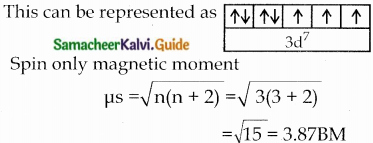
Question 14.
In what way is the electronic configuration of the transition elements different from that of the non – transition elements?
Answer:
Transition elements contain incompletely filled d-sub shell i.e their electronic configuration is (n-l)d^”1( ns0’1, , whereas non – transition elements have either no d- subshell or their
d-subshell is completely filled and have ns1,2 or n² np1-6 in their outermost shell.
Question 15.
Name the oxometa! anions of the first series of the transition metals in which the metal exhibits the oxidation state equal to its group number.
Answer:
Cr2O72- and Cr2O42-
(Group number = Oxidation state of Cr = 6 MnO4–
(Group = oxidation stale of Mn=7)
![]()
Question 16.
What is the effect of increasing pH of a solution of Potassium dichromate?
Answer:
On increasing pH of potassium dichromate solution (i.e. on adding alkali) it changes to potassium chromate.
Question 17.
Write chemical equations for the reactions involved in the manufacture of potassium permanganate from Pyrolusite. (PTA- 5)
Answer:
Relevant equations for the manufacture of KMn04 from pyrolusite ore are given below:

Question 18.
Classify the following elementsintod-block and f-block elements. (MARCH 2020)
Answer:
(i) Tungsten
(ii) Ruthenium
(iii) Promethium
(iv) Einstenium
d-block elements – Tungsten, Ruthenium
f-block elements- promethium, Einstenium
Question 19.
The halides of transition elements become more covalent with increasing oxidation state of the metal why?
Answer:
As the oxidation slate of the metal increases, its charge increases. According to Eajan’s Rules, as the charge of the metal ion increases covalent character increases because the positively charged cation attracts the electron could on the anion towards itself.
Question 20.
Although Cr3+ and Co2+ ions have the same number of unpaired electrons but the magnetic moment of Cr3+ is 3.87 B.M. and that of Co2+ is 4.87 B.M. why?
Answer:
Cr3+ ion has symmetrical electronic configuration in the outermost orbit i.e. 3d³. In such ions there is no orbital configuration to magnetic moment. However appreciable orbital contribution takes place in Co2+ with 3d7 configuration.
Question 21.
Why E° value for Mn, Ni and Zn are more megative than expected?
Answer:
Negative values for Mn2+ and Zn2+ are related to the stabilities of half – filled and fully filled configurations respectively.
Question 22.
Calculate the spin only magnetic moment of Mn2+
Answer:
E.C of Mn2+ = [Ar] 3d5
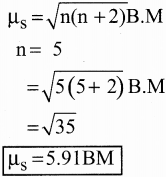
Question 23.
Why NiII complexes are thermodynamically more stable than PtII complexes?
Answer:
The ionisation energy of Ni2+ less than that of Pt2+. Hence Ni2+ complexes are more stable than Pt2+ complexes.
Question 24.
Why do transition elements and its compounds act as catalyst? (PTA – 5)
Answer:
Transition metals has energetically available d orbitals that can accept electrons from reactant molecule or metal can form bond with reactant molecule using it’s d electrons.
Question 25.
WhatisZeigler-Natta Polymerisation
Answer:
A mixture of TiCl4 and Tri alkyl aluminium is used for polymerisation.

Question 26.
Actinoid atoms are generally coloured? Justify your answer.
Answer:
The actinoid ions are generally coloured. This can be explained interms of unpaired
electrons u nde rgoi ng f – f Transi t ion.
Question 27.
How many unpaired electrons are present in Mn2+ ion. (Z=25) How does it influences magnetic behaviour of Mn2+ ion.
Answer:
Mn2+ :3d5 has 5 unpaired electorns. It is highly paramagnetic and it is attracted by magnet.
![]()
Question 28.
Transition metal atoms/ions are usually coloured. Justify.
Answer:
Transition metal ions have unpaired electrons. They can undergo d-d transition by absorbing light from visible region and radiating complementary colour.
Question 29.
Give the disproportionation of manganese (VI) in acidic medium.
Answer:
3MnO42- + 4H+ → 2MnO– + MnO2 + 2H2O
Question 30.
Oxoanions of a metal show higher oxidation state. Give reason.
Answer:
Oxo anions of a metal show higher oxidation state due to the ability of oxygen to form multiple bonds and its high electronegativity.
XI. Additional Questions – 3 Mark
Question 1.
In the series Sc (Z = 21) to Zn (Z = 30) the enthalpy of atomisation of Zinc is the lowest i.e. 126 KJ mol¹. why?
Answer:
In the series Sc to Zn, all elements have one or more unpaired electrons except zinc which has no unpaired electrons, its outer electronic configuration being 3d10 4s². Lower the number of unpaired electrons, lower is the metal – metal bonding. Hence, metal – metal bonding is weakest in zinc. Therefore, enthalpy of atomisation is lowest.
Question 2.
Explain why Cu+ ion is not stable in aqueous solutions.
Answer:
Cu2+ (aq) is much more stable than Cu+ (aq). Although, second ionisation enthalpy of copper is large but ∆Hhyd for Cu2+ (aq) is much more negative than thatfor Cu+ (aq) and hence it more than compensates for second ionisation enthalpy of copper. Therefore, many copper (I) compounds are unstable in aqueous solution and undergo disproport¬ionation.
Question 3.
Write down the electronic configuration of :
Answer:
i) Cr3+
ii) Cu+
iii) Co2+
iv) Mn2+
v) Pm3+
vi) Ce4+
vii) Lu2+
viii) Th4+
Answer:
| ion | electronic configuration |
| i) Cr3+ | [Ar]3d3 |
| ii) Cu+ | [Ar]3d10 |
| iii) Co2+ | [Ar]3d7 |
| iv) Mn2+ | [Ar]3d5 |
| v) Pm3+ | [Xe]4f4 |
| vi) Ce4+ | [Xe]4f0 |
| vii) Lu2+ | [Xe]4f14 5d1 |
| viii) Th4+ | [Rn]5f0 |
Question 4.
What are the different oxidation states exhibited by lanthanoids?
Answer:
The most common oxidation state of lanthanoids is +3. However, some lanthanoids also show an oxidation state of +2 and +4. For example, Eu shows an oxidation state of +2 and Ce shows on oxidation state of +4.
Question 5.
Describe the oxidising action of potassium dichromate and write the ionic equations for its reactions with (i) iodide (ii) iron II solution and (iii) H2S (PTA – 5)
Answer:
i) Cr2O72- + 14H+ + 6I– → 2Cr3+ + 7H2O + 3I2
ii) Cr2O72- + 6Fe2+ + 14H+ → 2Cr3+ + 6Fe3++ 7H2O
iii) Cr2O72- + 8H+ + 3H2S → 2Cr3+ + 7H2O + 3S
Question 6.
What is meant by disproportionations’? Give two examples of disporportionation reaction in aqueous solution.
Answer:
When the oxidation state of an element in a reactant increases in one of the products and decreases in other product, the phenomenon is called disproportionation. For example, Mn(VI) in MnO42 changes to Mn (VII) in the product MnO4 and Mn(IV) in the product MnO2 as shown by the reaction.
3MnO42- + 4H+ → 2MnO4-+ MnO2 + 2H2O
similarly, Cr (V) undergoes disproportionation in acidic medium as follows.
CrQ43-+ 8H+ → 2CrO42- + Cr3+ + 4H2O
Question 7.
Calculate the no. of unpaired electrons in the following gaseous ions :
Answer:
Mn3+, Cr3+, V3+ and Ti3+ which one of these is the most stable in aqueous solution?
Mn3+ : 3d4 has 4 unpaired electrons,
Cr3+ : 3d³ has 3 unpaired electrons,
V3+ : 3d² has 2 unpaired electrons,
Ti3+ : 3d¹ has 1 unpaired electrons.
Cr3+ is most stable out of these in aqueous solution because it has half filled t2g level (i.e.t³2g)
Question 8.
Why is the +2 oxidation state of manganese quite stable, while the same is not true for iron?
Answer:
Half filled configuration is more stable than others. Mn2+ is more stable due to half-filled d – orbitals.
Fe2+ is not stable because it does not have half filled d – orbitals. Configurations of Mn2+ and Fe2+ are as follows :
Mn2+ : 3d5 4s0
Fe2+ : 3d6 4s0
Question 9.
Write two characteristics of the transition elements. (PTA – 3)
Answer:
All the transition elements are metals.
All the transition metals are good conductors of heat and electricity.
![]()
Question 10.
Explain about diamagnetic materials.
Answer:
- Materials with no elementary magnetic dipoles are diamagnetic or a species with all paired electrons exhibits diamagnetism.
- This kind of materials are repelled by the magnetic field.
- Because the presence of external magnetic field, a magnetic induction is introduced to the material which generates weak magnetic field that oppose the applied field.
Question 11.
Explain about paramagnetic materials.
Answer:
- Paramagnetic solids having unpaired electrons.
- In the absence of external magnetic field, the dipoles are arranged at random and hence the solid shows no net magnetism.
- In the presence of magnetic field, the dipoles are aligned parallel to the direction of the applied field and therefore, they are attracted by an external magnetic field.
Question 12.
A substance is found to have a magnetic moment of 3.9 BM. How many number of unpaired electrons does it certain?
Answer:
Magnetic moment µ = 3.9
\(\sqrt{\mathrm{n}(\mathrm{n}+2)}\) = 3.9B.M
n(n + 2) = (3.9)² = 15
n (n + 2 ) = 3(3+ 2)
n = 3
The number of unpaired electrons is 3.
Question 13.
Why Zn2+ salts are white while Ni2+ salts are coloured? (PTA – 3)
Answer:
- Zn2+ has the configuration 1s² 2s² 2p6 3s² 3p6 3d10
- It has completely filled d orbital and there is no unpaired electrons.
- Hence Zn2+ is colourless.
- Ni2+ has the configurations 1s² 2s² 2p6 3s² 3p6 3d8
- It has two unpaired electrons and d – d transitions are possible.
- Hence Ni2+ is coloured.
Question 14.
[Ti(H2O)6]3+ is coloured while
[Sc(H2O)6]3+ is colourless. Explain.
Answer:
- In [Ti(H2O)5]1+ ,Tr3+ has outer electronic configuration as 3d¹
- In this case d-d transition is possible by the absorption of energy from the visble light and produce purple colour.
- But is [Sc(H2O)6]3+, Sc3+ has outer electronic configuration as 3d°.
- In this case d-d transition is not possible and it is colourless.
Question 15.
What are the characteristics of interstitial compounds?
Answer:
- They are hard and show electrical and thermal conductivity
- They have high melting points higher than those of pure metals
- Transition metal hydrides are used as powerful reducing agents
- Metallic carbides are chemically inert.
Question 16.
Explain why d block elements form more complexes?
Answer:
- Transition metal ions are small and highly charged
- They have vacant low energy orbitals to accept an electron pair donated by other groups.
- Examples : [Fe(CN)6]4-, [Co(NH3)6]3+
Question 17.
Explain chromyl chloride test. (MARCH 2020)
Answer:
When potassium dichromate is heated with any chloride salt in the presence of Cone H2SO4, orange red vapours of chromyl chloride (CrO2Cl2) is evolved.
![]()
This reaction is used in the detection of chloride ions in qualitative analysis.
![]()
Question 18.
Write the uses of potassium dichromate.
Answer:
- It is used as a strong oxidizing agent.
- It is used in dyeing and printing.
- It used in leather tanneries for chrome tanning.
- It is used in quantitiative analysis for the estimation of iron compounds and iodides.
Question 19.
Write the uses of potassium permanganate.
Answer:
- It is used as a strong oxidizing agent.
- It is used for the treatment of various skin infections and fungal infections of the foot.
- It used in water treatment industries to remove iron and hydrogen sulphide from well water.
- It is used as a Bayer’s reagent for detecting unsaturation in an organic compound.
- it is used in quantitative analysis for the estimation of ferroussalts, oxalates, hydrogen peroxide and iodides.
Question 20.
What is the action of heat on K2Cr2O7 ?
Answer:
Potassium dichromate on heating gives potassium chromate.
![]()
XII. Additional Questions – 5 Mark
Question 1.
For M2+ /M and M3+ / M systems, the E° values for some metals are as follows.
Cr2+ /Cr = 0.9 V ; Cr3+ /Cr2+ = – 0.4 V
Mn2+ /Mn = -1.2 V ; Mn3+/Mn2+= +1.5 V
Fe2+ /Fe = +0.4 V ;Fe3+/Fe2+ = +0.8 V
Use this data to comment upon
(a) the stability of Fe3+ in acid solution as composed to that of Cr3+ or Mn2+ and
(b) the ease with which iron can be oxidised as compared to the similar process for either chromium or manganese metals.
Answer:
(a) Cr3+ / Cr2+ has a negative reduction potential Hence, Cr3+ cannot be reduced to Cr2+ i.e. Cr3+ is most stable. Mn3+/ Mn2+ has large positive E° value. Hence, Mn3+ can be easily reduced to Mn2+, i.e. Mn3+ is least stable. Eo value for Fe3+ / Fe2+ is positive but small. Hence, Fe3+ is more stable than Mn3+ but less stable than Cr3+. Thus, the stability follows the order.
Cr3+>Fe3+>Mn3+
(b) Oxidation potentials for the given pairs will be +0.9V, +1.2V, and +0.4V. Thus the order of getting oxidised will be
Mn > Cr > Fe
Question 2.
(i) Why do transition elements show variable oxidation states?
(ii) Why do most transition metal ions exhibit para magnetism?
(iii) How is the magnetic moment of a species related to the number of unpaired electrons?
Answer:
(i) This is because ns and (n-1) d orbitals do not differ much in energy. Electrons from both may take part in bonding. Hence, they show variable valency.
(ii) This is because of presence of unpaired electrons in most of the transition metal ions.
(iii) \(\mu_{\mathrm{s}}=\sqrt{\mathrm{n}(\mathrm{n}+2)}\) BM, where n stands for the number of unpaired electrons.
Question 3.
(i) Why is copper (z=29) considered as transition element?
(ii) K2PtCl6 is well – known compound while corresponding Ni compound is not known.
(iii) Why is radius of Fe2+ less than that of Mn2+?
(iv) Why is electronic configuration 1s² 2s² 2p6 3s² 3p6 4s² 3d4 not correct for the ground state of Cr (Z-24)?
Answer:
(i) This is because Cu2+ ion has incomplete d – orbital
(ii) This is because Pt4+ is more stable than Ni4+ Energy required to remove 4 electrons from pt is less and that in Ni than.
(iii) This is because effective nuclear charge in Fe2+ is more compared to that in Mn2+
(iv) Correct electronic configuration is 1s² 2s² 2p6 3s² 3p6 4s¹ 3d5 because half – filled configuration
Question 4.
(i) Which trivalent cation is the largest in lanthanoid series?
(ii) One unpaired electron in atom contributes a magnetic moment of 1.1 B.M. Calculate the magnetic moment of Cr. (Atomic number = 24)
(iii) In a paramagnet ion, all the bonds formed between Mn and O are covalent. Give reasons.
Answer:
(i) La3+ is the largest ion
(ii) As Cr has 6 unpaired electrons, its magnetic moment is 6 x 1.1 = 6.6 B.M.
(iii) Oxidation state of Mn is MnO4 is +7. It is energitacally not possible to lose 7 electrons to give ionic species. It forms bonds by sharing of elctrons. Hence, covalent bonds are formed.
![]()
Question 5.
There is only a marginal difference in decrease in ionisation elthalpy from Aluminium to Thallium. Explain why? (MARCH 2020)
Answer:
This is due to the presence of inner d-electrons and f-electrons which has poor shielding effect compared to s and p electrons.
Question 6.
(i) Name the metal with tripositive charge represented by the following electronic configuration : 1s² 2s² 2p6 3s² 3p6 3d³
(ii) Why is K2Cr2O7 generally preferred over Na2Cr2O7 in volumetric analysis though both are oxidising agents?
(iii) Why does V2O5, act as catalyst?
Answer:
(i) Cr3+ is represented by Ihe configuration : 1s² 2s² 2p6 3s² 3p6 3d³
(ii) Na2Cr2O7 absorbs moisture from, the atmosphere.
(iii) It can form unstable intermediates with the reactants which readilv change into products
Question 7.
Explain the following observations.
(a) The elements of the d – series exhibit a large number of oxidation states than the elements of f – series.
(b) The Cu+ salts are colourless while Cu2+ salts are coloured (Atomic number of [Cu=29]
Answer:
(a) In d – series there are large number of unpaired electrons which take part in bond formation due to less effective nuclear charge, therefore, number of oxidation states are more. In f – block, there is more effective nuclear charge due to poor shielding effect of f – orbitals. Therefore, less number of electrons take part in bond formation.
(b) Cu+ does not have unpaired electtron, therefore the electrons cannot undergo d-d transitions. That is why, Cu+ salts are colourless. Cu2+ salts are coloured due to presence of one unpaired electron, it can undergo d-d transition by absorbing light from visible region and radiating blue colour.
Question 8.
How do you account for the following?
(i) All Scandium salts are white [Atomic number of Sc=21]
(ii) The first ionisation energies of the 5d transition elements are higher than those of the 3d and 4d transition elements in respective groups.
Answer:
(i) In Scandium Salts, Scandium has +3 oxidation state. Sc3+ does not have unpaired electrons and has empty d – orbitals. Therefore, there is no d-d transition, Hence its salts are white.
(ii) Due to poor shielding effect of 5d and 4f – electrons, effective nuclear charge increases, Hence, ionisation energy of 5d transition elements is more than that of 3d and 4d transition elements in respective groups.
Question 9.
How would you account for the following Situations?
(i) The transition metals generally form coloured compounds.
(ii) With 3d4 configuration, Cr2+ acts as a reducing agent, actinoids exhibit a larger number of oxidation agent.
(iii) The actinoids exhibit a larger number of oxidation states than the corresponding lanthanoids.
Answer:
(i) Transition metals contain unpaired d- electrons. The d – electrons absorb light from the visible range and are excited to higher energy d – orbitals (from t2g to eg orbitals). Transmitted light is the colour shown by the transition metals.
(ii) Cr2+ has d4 configuration while Cr3+ has more stable d5 configuration. Thus Cr, has a tendency to change from Cr2+ to Cr3+ or Cr2+ acts as reducing agent. Mn3+ has a d4 configuration. It has a tendency to change into Mn2+ with more stable d5 configuation. Thus, Mn3+ acts as an oxidising agent.
(iii) Actinoids exhibit a larger number of oxidation states than the corresponding lanthanoids because 5f, 6d and 7s levels are comparable energies.
Question 10.
A Violet compound of manganese (A) decomposes on heating to liberate oxygen and compound (B) and (C) of manganese are formed. Compound (C) reacts with KOH in presence of potassium nitrate to give compound.
(B) On heating compound (C) with Cone. H2SO4 and NaCl, Chlorine gas is liberated and a compound (D) of manganese along with other products is formed. Identify compounds (A) to (D) and also explain the reactions involved.
Answer:
The compounds A,B,C and D are given as under : A = KMnO4, B = K2MnO4, C = MnO2, D = MnCl2
The reactions are explained as under:

2MnO2 + 4KOH+ O2 → 2K2MnO4 + 2H2O
MnO2 + 4NaCl + 4H2SO4 → MnCl2 + 4NaHSO4 + Cl2 + 2H2O
Question 11.
When a chromite ore (A) is fused with Sodium Carbonate in free excess of air and the product is dissolved in water, a yellow solution of compound (B) is obtained. After treatment of this yellow solution with sulphuric acid, compound (C) can be crystallized from the solution. When compound (C) is treated with KC1, orange crystals of compound (D) crystallises out. Identify (A) to (D) and also explain the reactions.
Answer:
The compounds A,B,C and Dare given as under
A = FeCr2O4
B = Na2CrO4
C = Na2Cr2O7-2H2O
D = K2Cr2O7
The reactions are explained as under :

Question 12.
Explain the following facts:
(a) Transition metals acts as catalysts.
(b) Chromium group elements have the highest melting points in their respective series.
(c) Transition metals form coloured complexes.
Answer:
(a) Transition metals have incomplete d-orbitals. They combine with the reactants to form intermediate products which change into the final products.
(b) Chromium group elements have the greatest number of unpaired electrons in d-orbitals. They ae capable of forming maximum interatomic metallic bonds. This raises the melting point of the chromium group elements.
c) Transition metals have incompletely filled d-orbitals and have unpaired electrons which are excited to higher energy d-orbitals in the same sub-shell (from t2g to eg). These are called d-d transitions. During this process, the molecules absorb energy from the visible region. The transmitted light is the colour shown by the substance.
![]()
Question 13.
Discuss the structure of dichromate ion:
Answer:
(i) Both dichromate and chromate ions are oxo anions of chromium and they are oxidising agents.
(ii) In these ions Cr is in +6 oxidation state.
(iii) In aqueous solution these ions are interconvertible.
(iv) In alkaline solution chromate ion is predominant.
(v) In acidic solution dichromate ion is predominant.
Question 14.
Discuss the oxidising power of KMnO4 in
a) Acidic medium
b) neutral medium
c) alkaline medium
Answer:
a) Acidic medium
It oxidises ferrous salt to ferric salt
2MnO4– + 10Fe2+ + 16H+ → 2Mn2+ + 10Fe3+ + 8H2O
b) Neutral medium:
It oxidises H2S to sulphur
2MnO4– + 3H2S → 2MnO + 3S + 2OH– + 2H2O
c) Alkaline medium:
In the presence alkali the permanganate ion is converted into manganate ion.
MnO4– + 2H2O + 3e– → MnO2 + 40H–

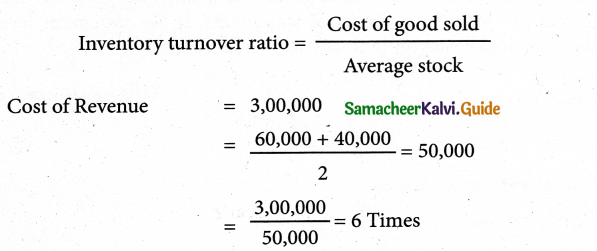

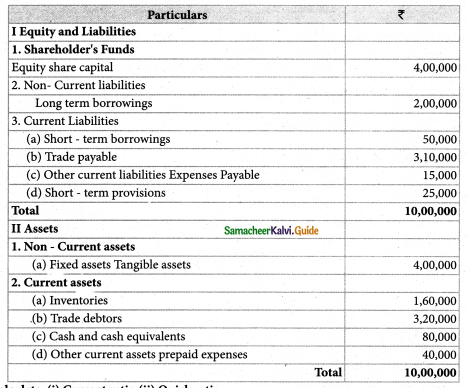
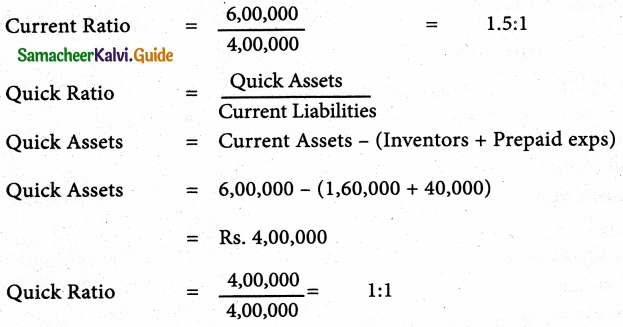
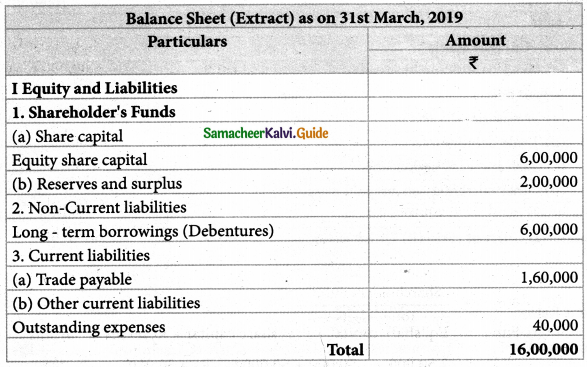

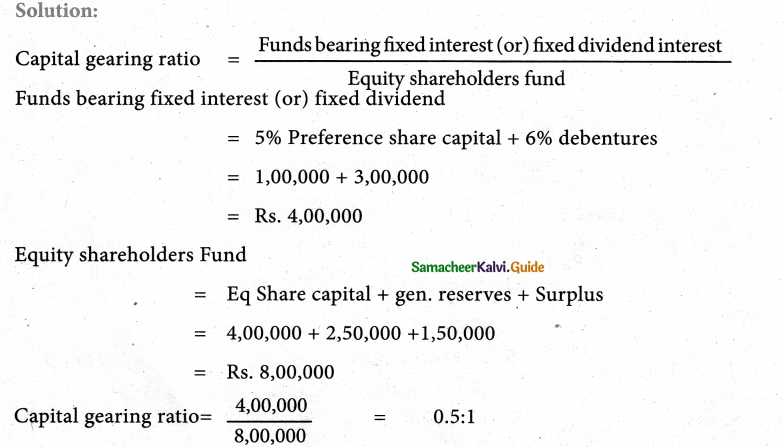
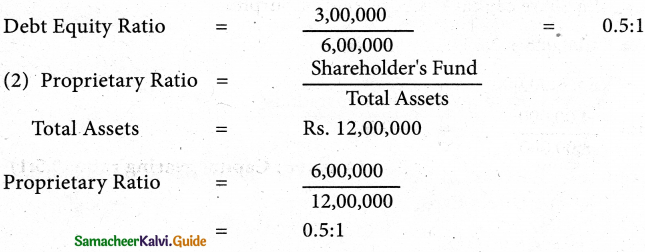
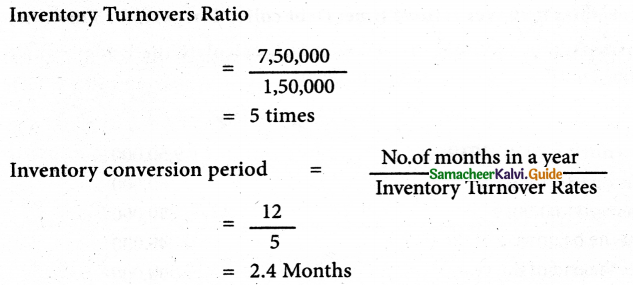
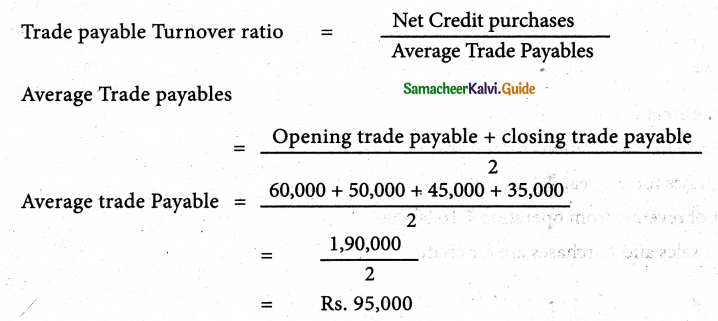

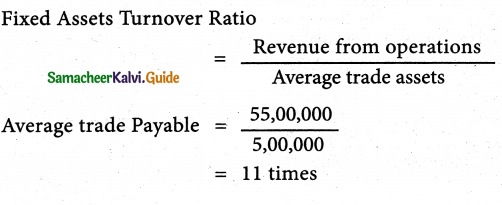
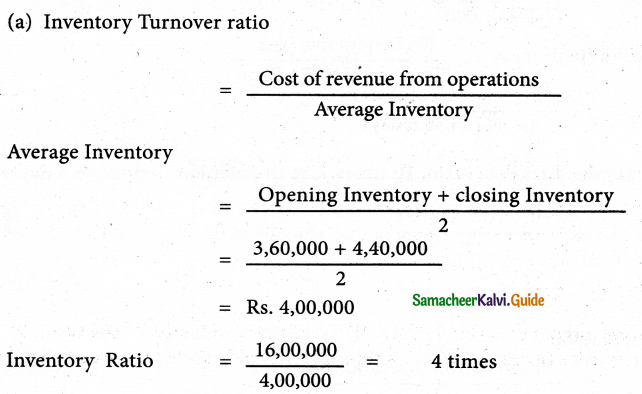
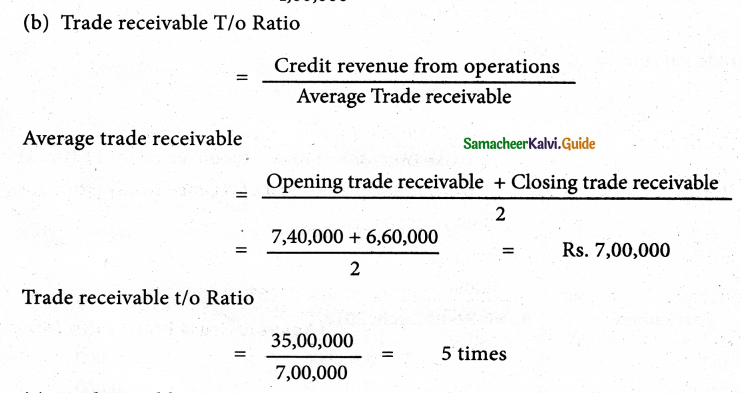
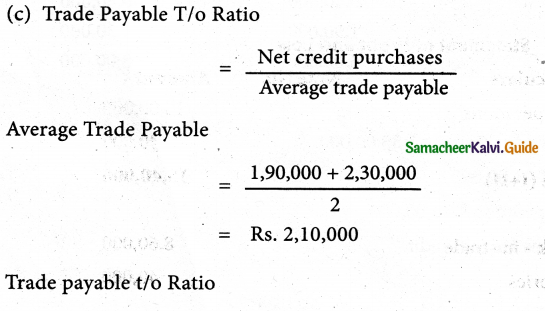


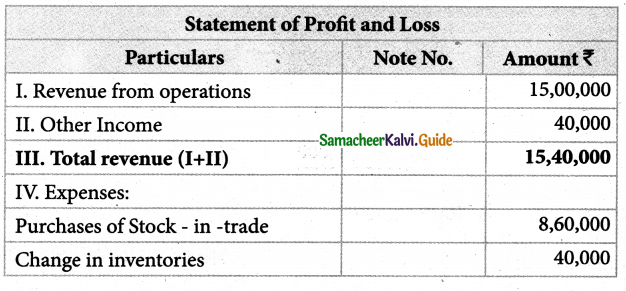

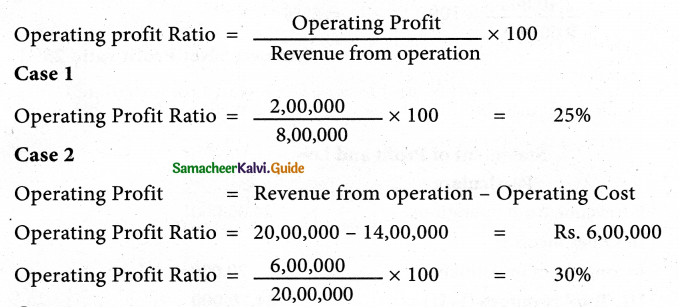


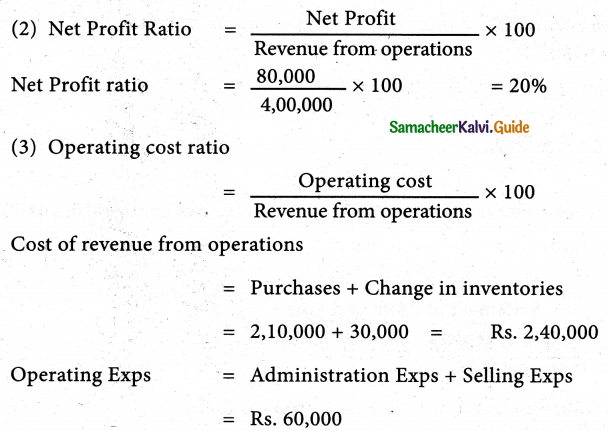

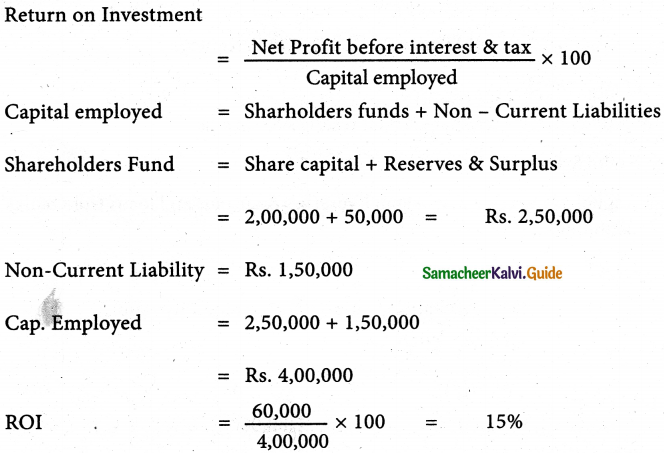


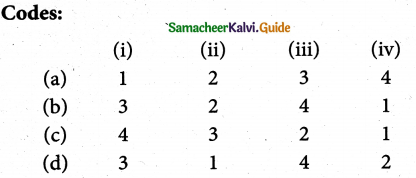
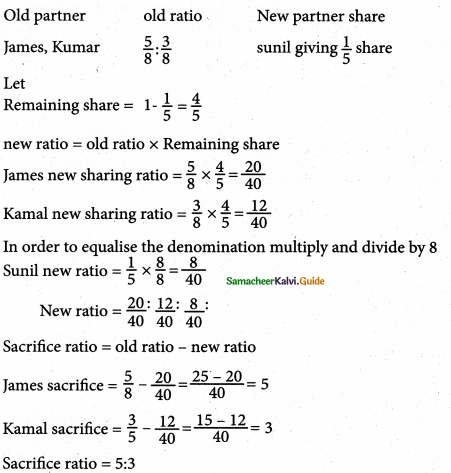
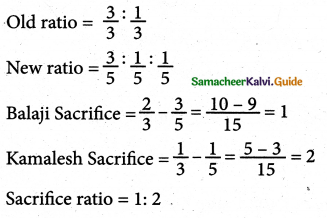
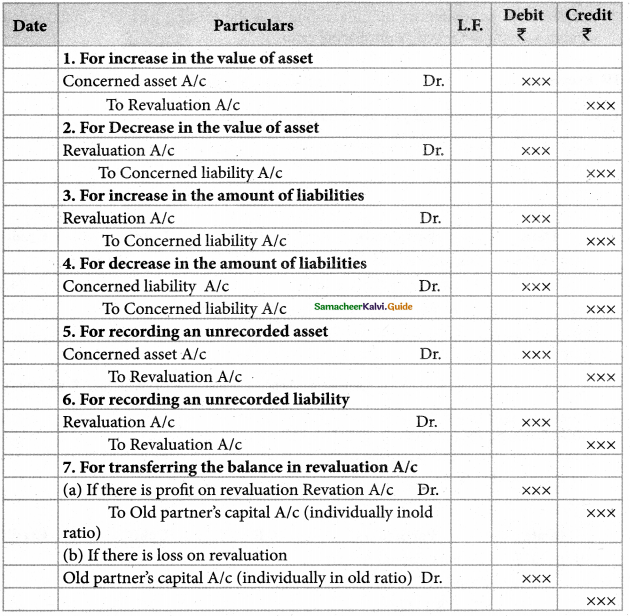


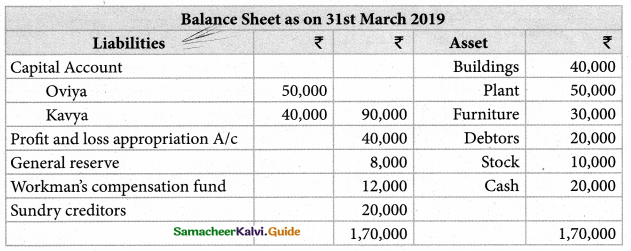


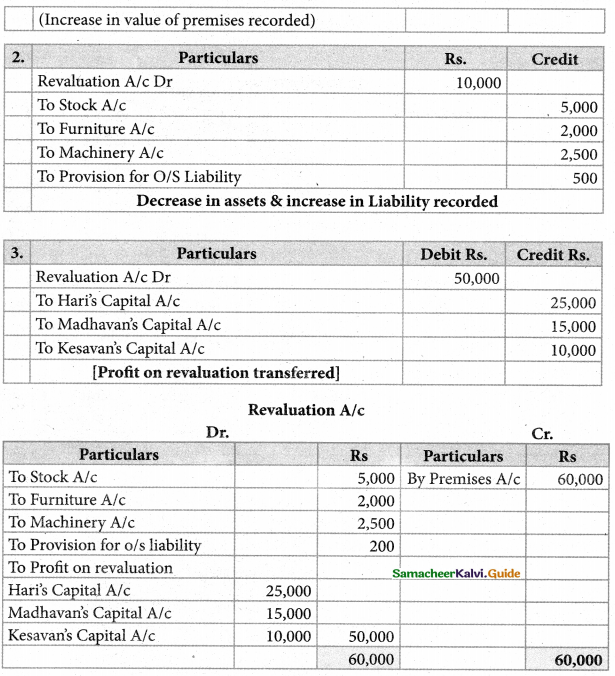
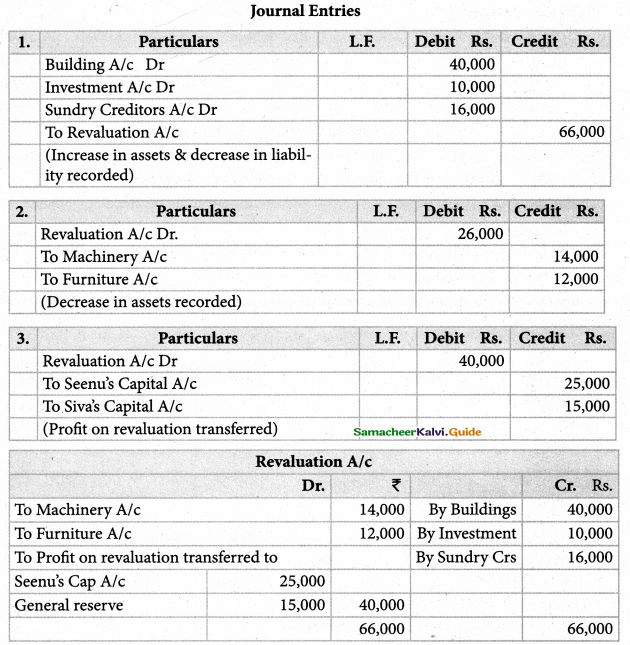


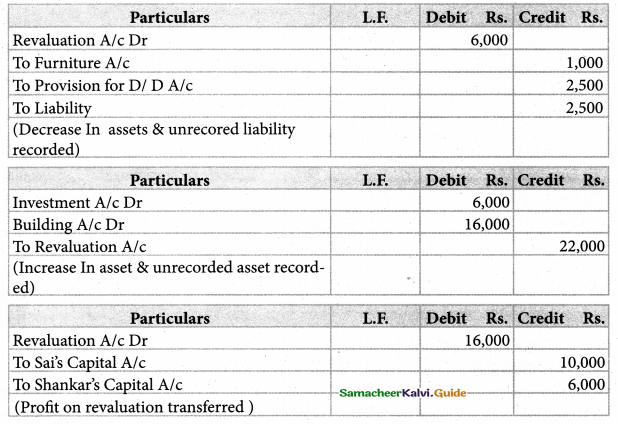
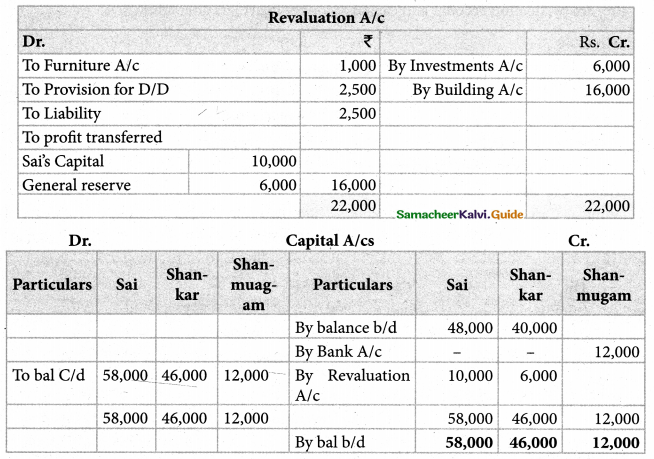

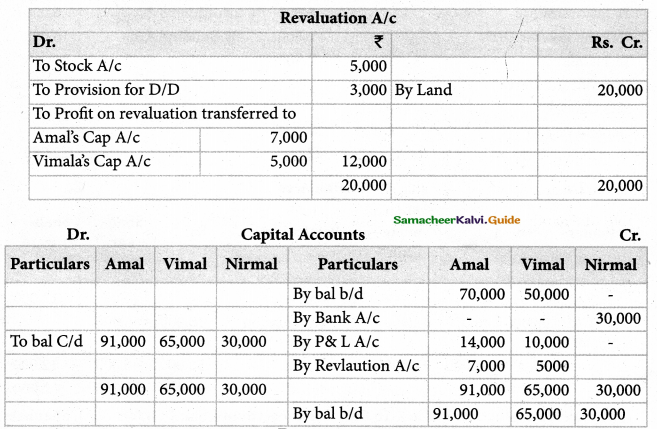
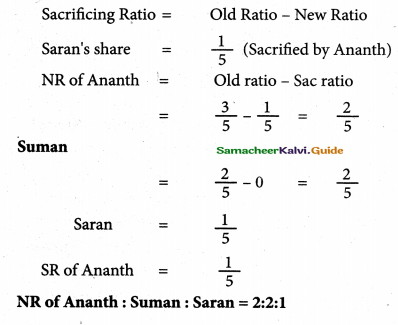
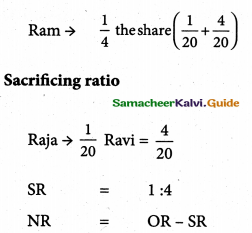
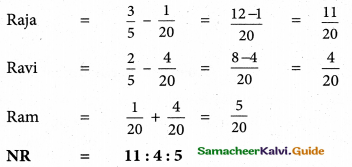
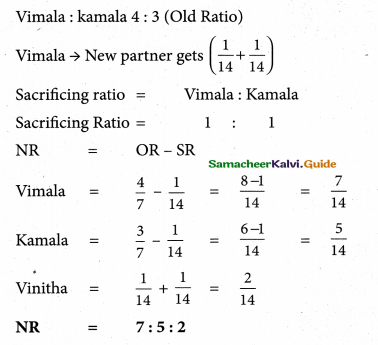

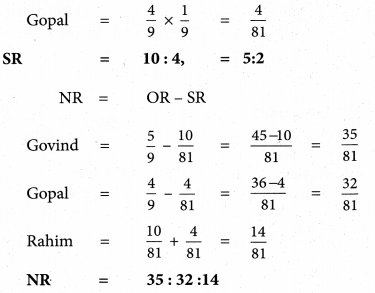
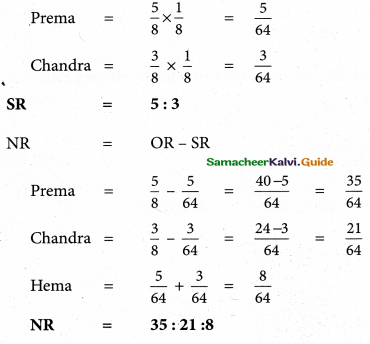
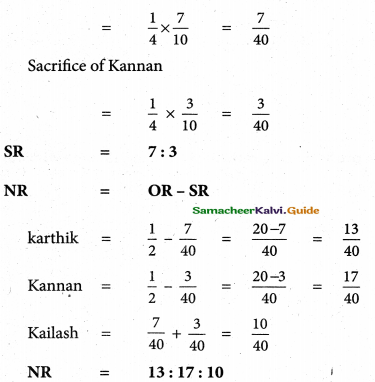
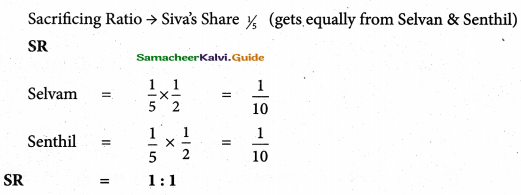
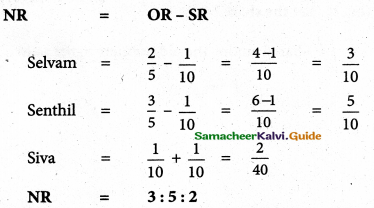
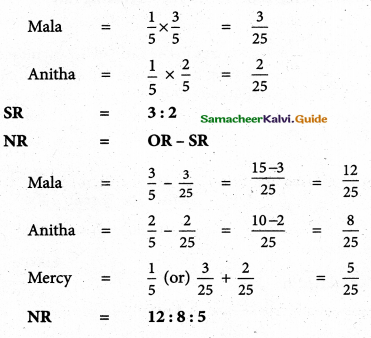
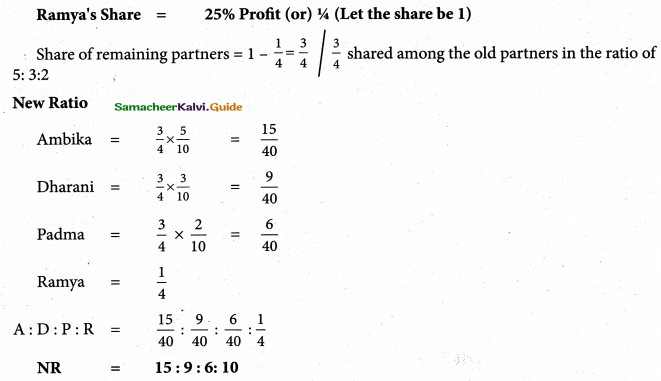
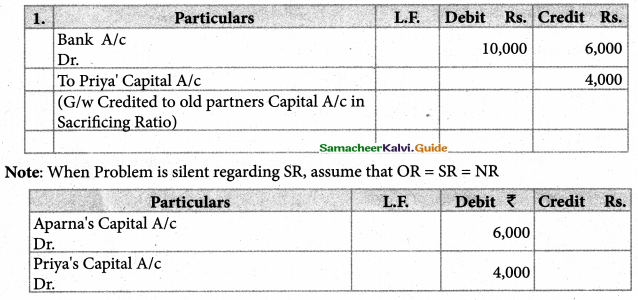

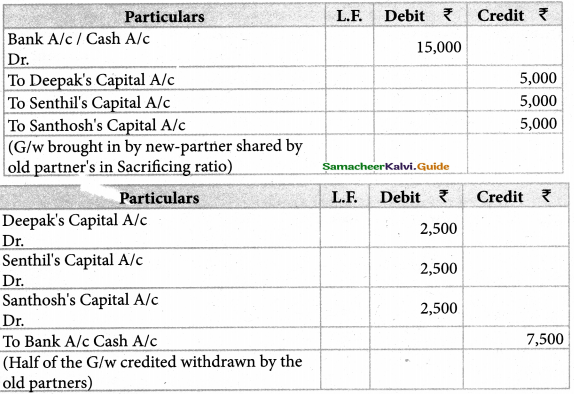

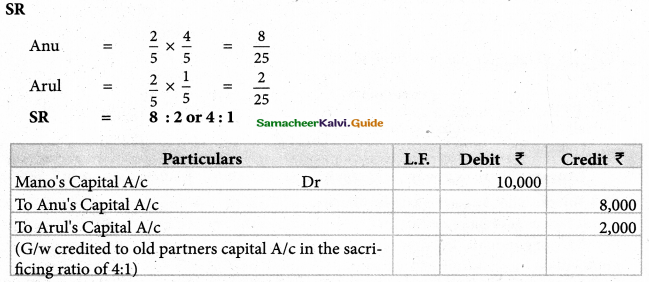
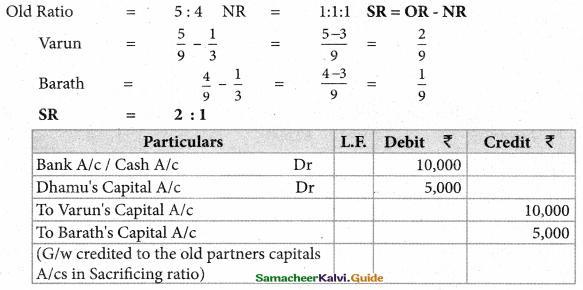

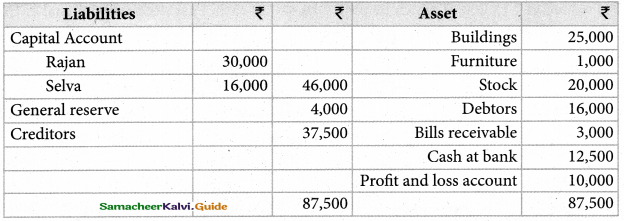
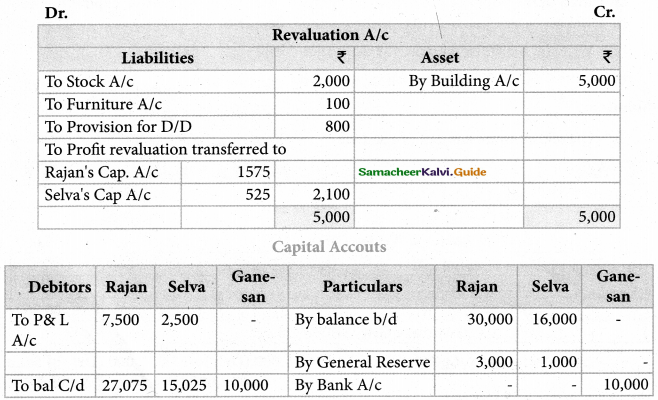
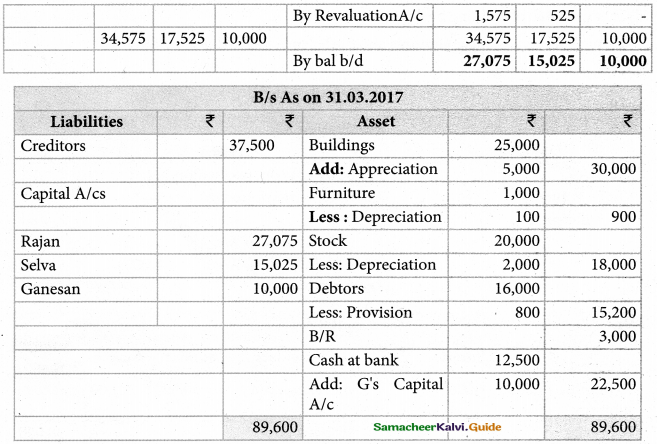

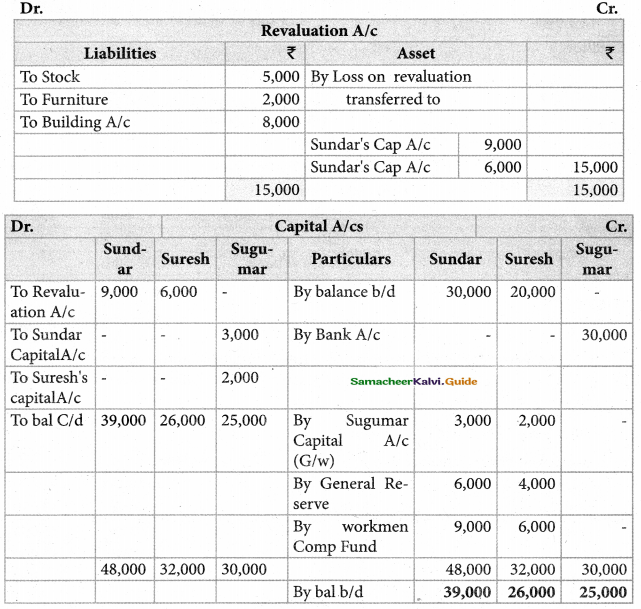



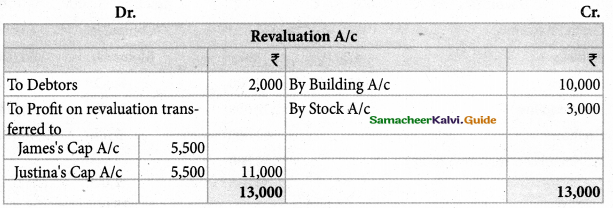
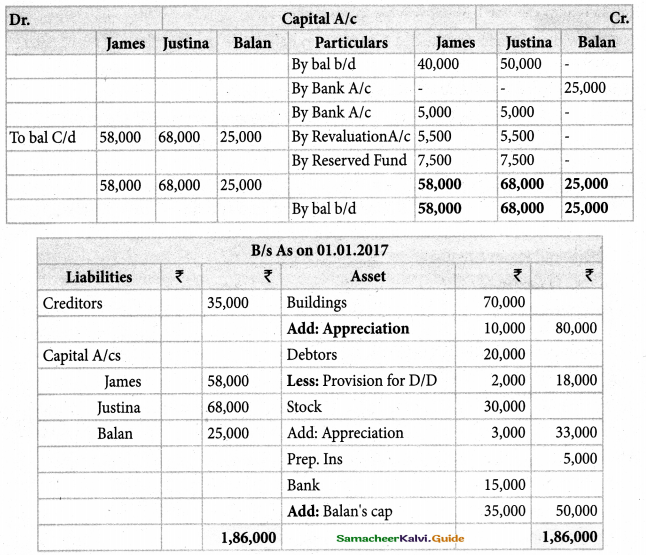
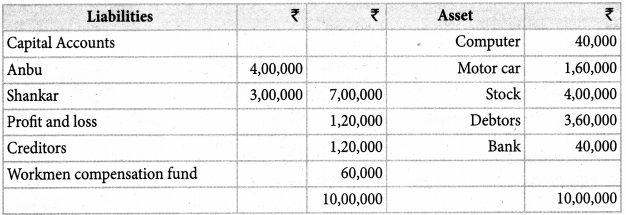
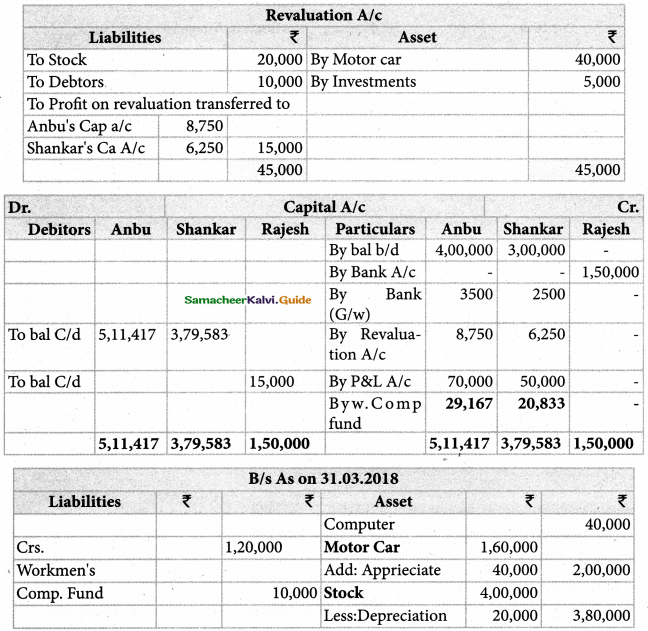


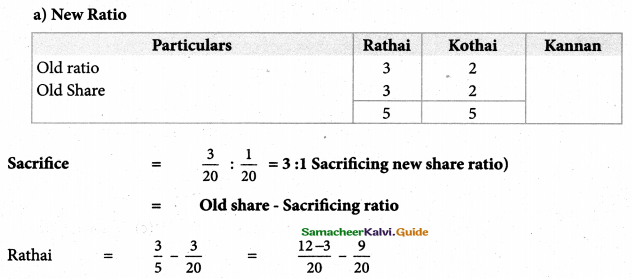
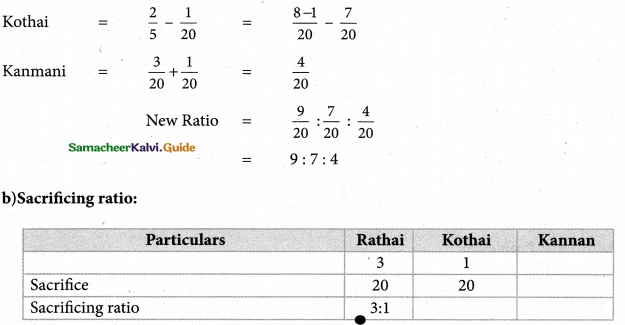
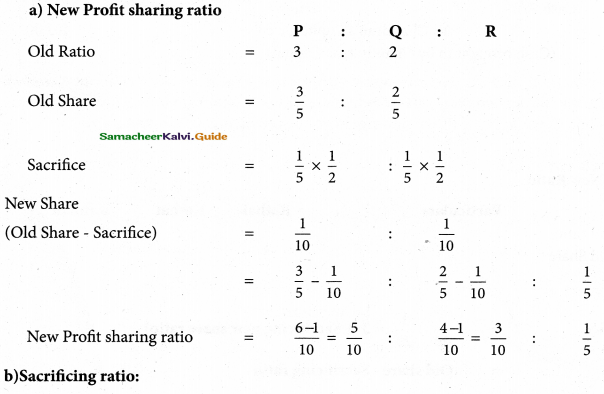
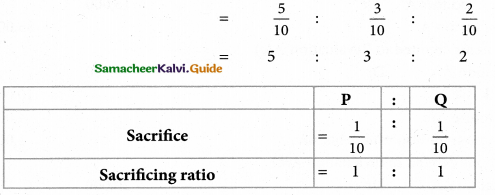
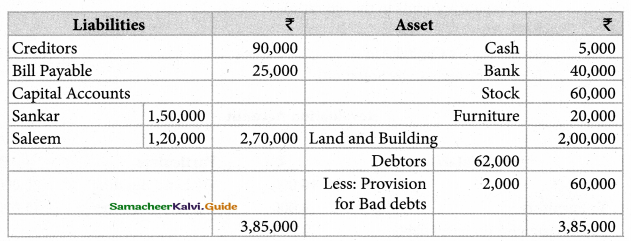

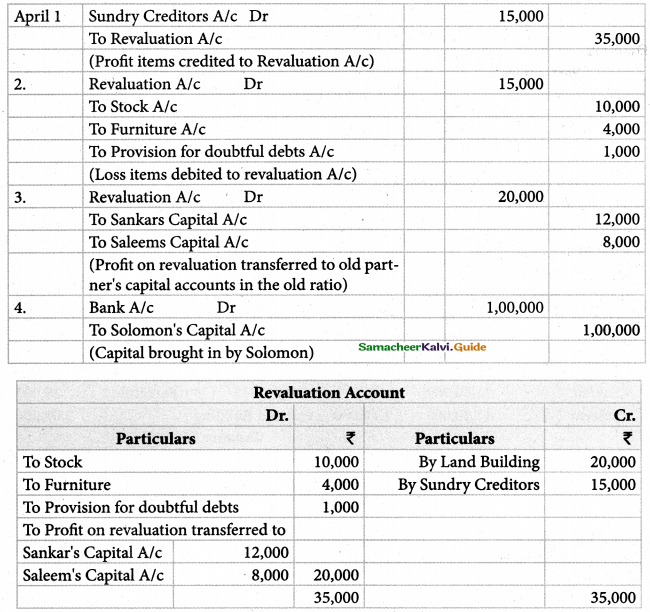

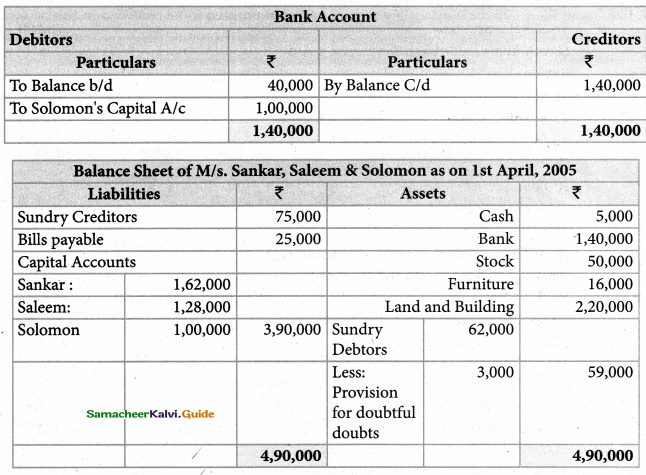

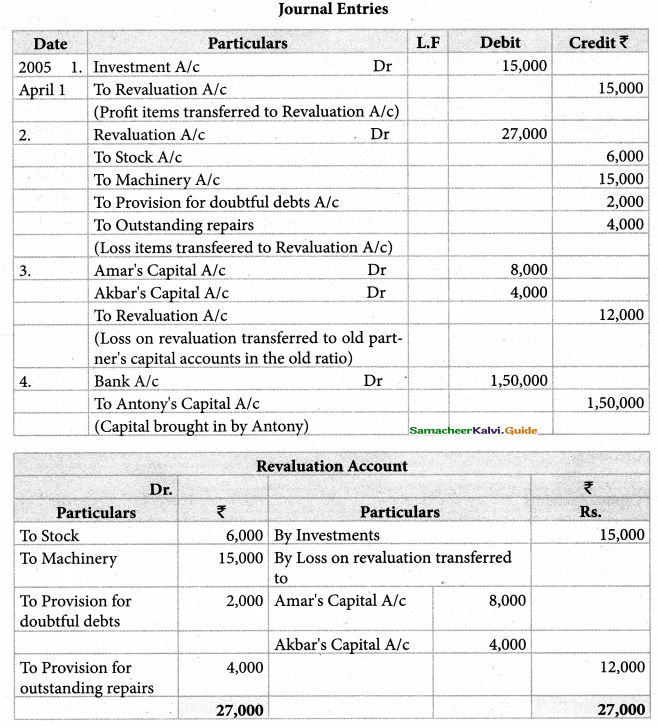
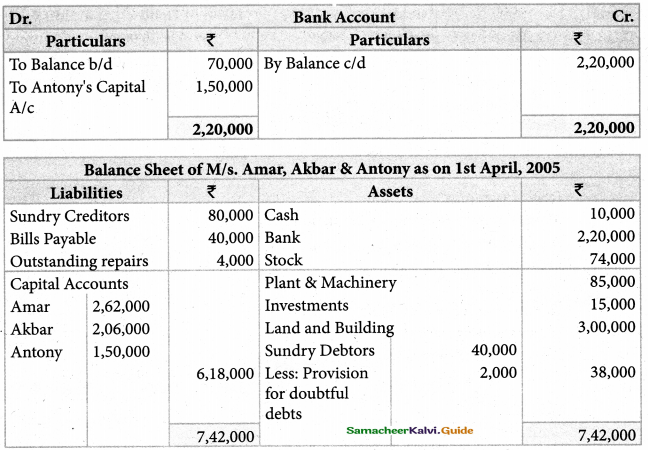


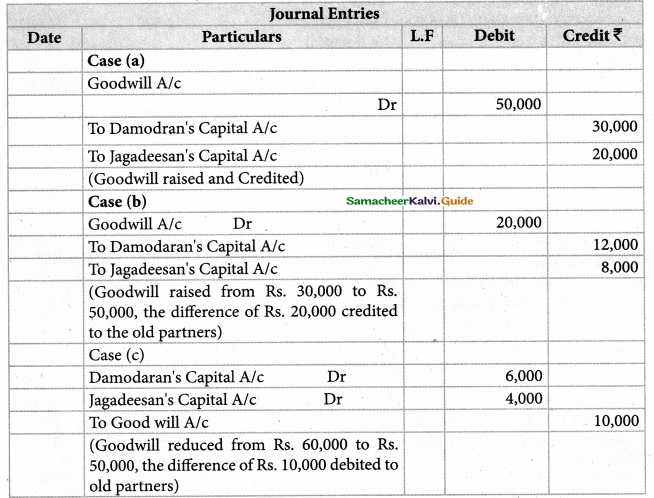
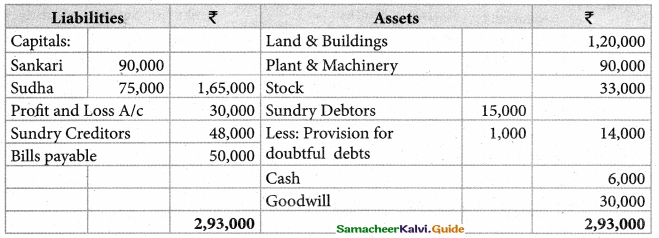
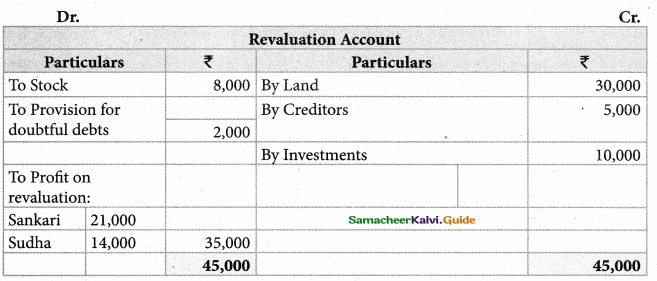
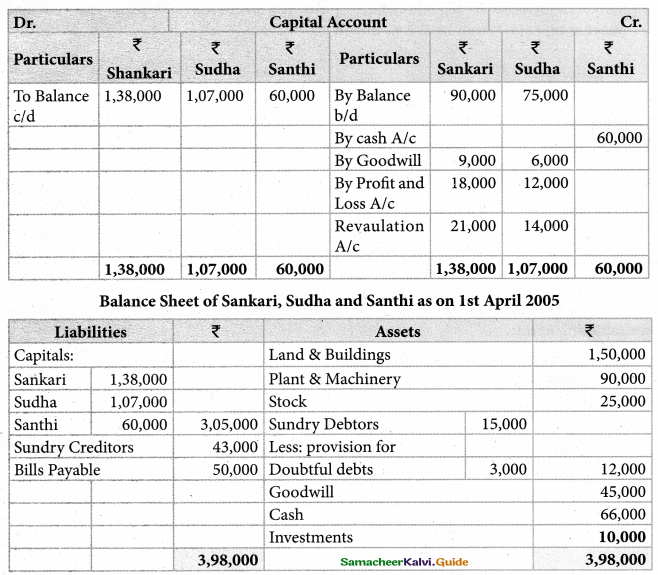
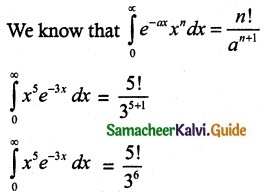

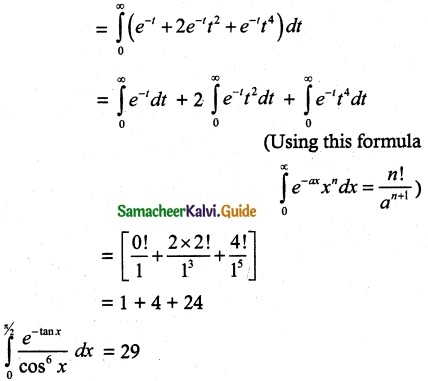
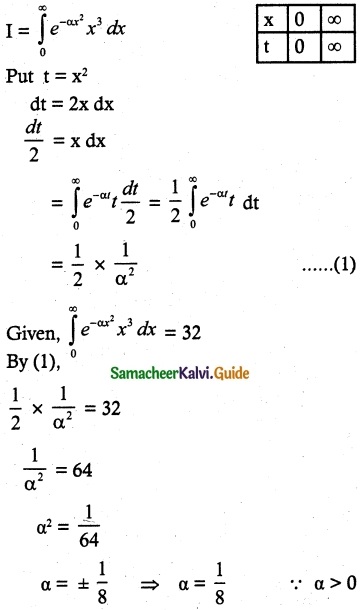
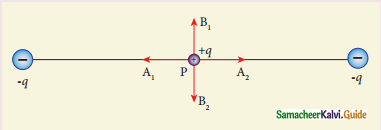

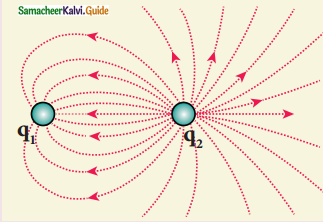
 q = 8 × 10-2c
q = 8 × 10-2c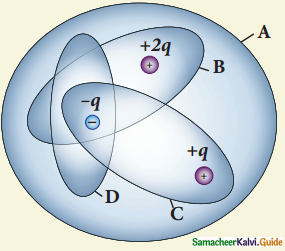
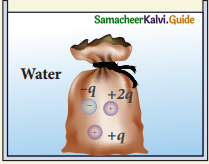
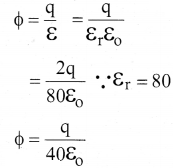
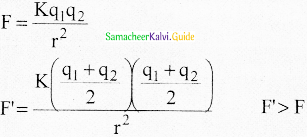

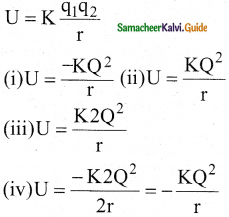
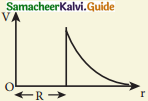

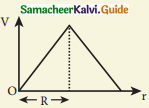


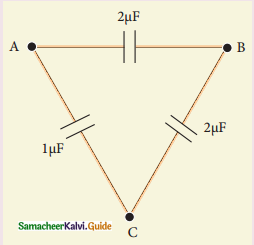
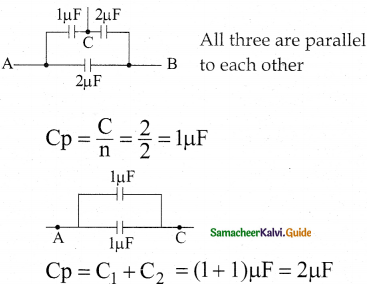



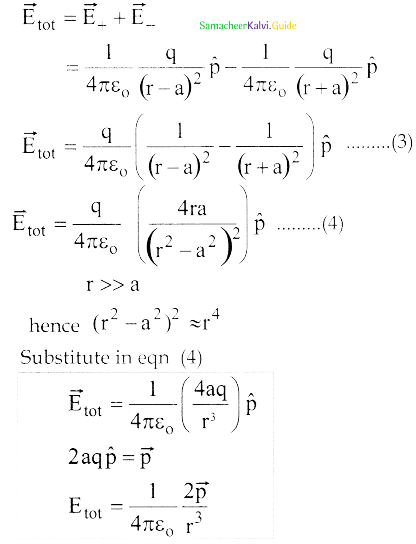

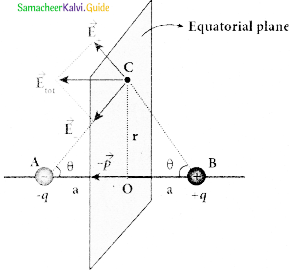
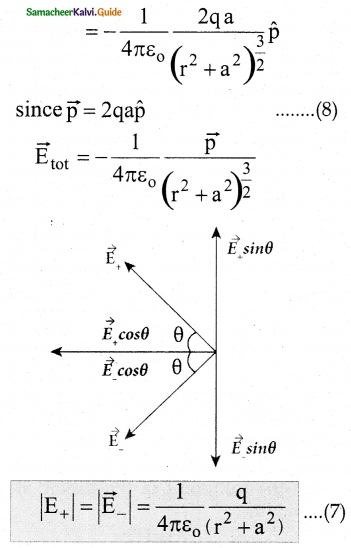
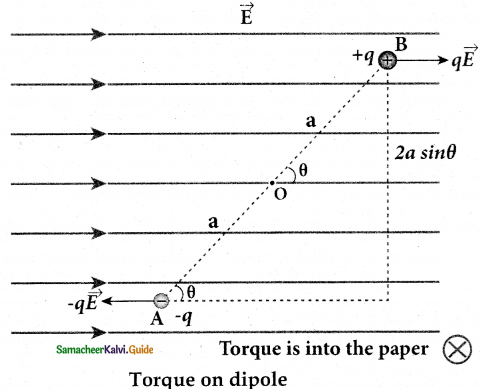

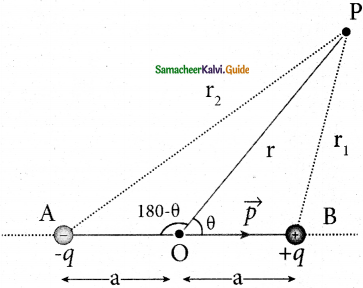
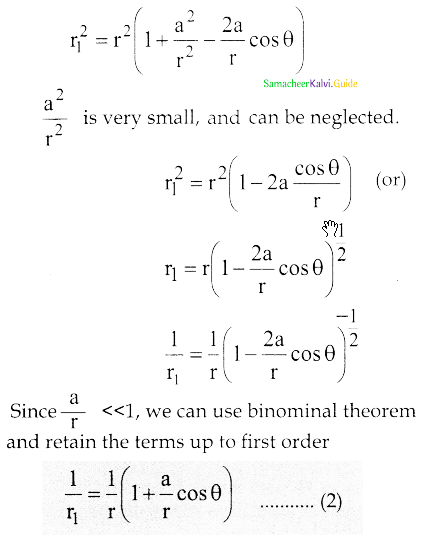
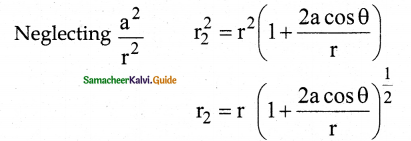
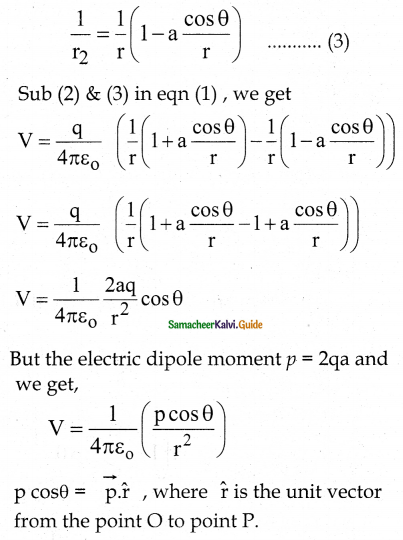
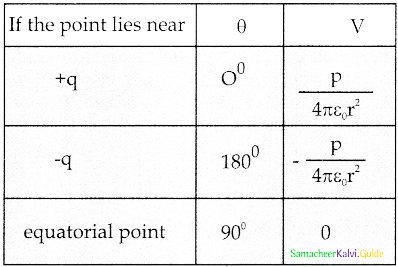
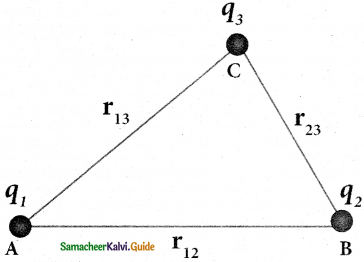
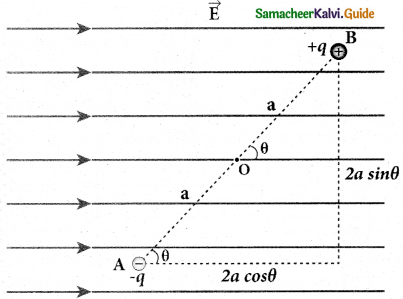
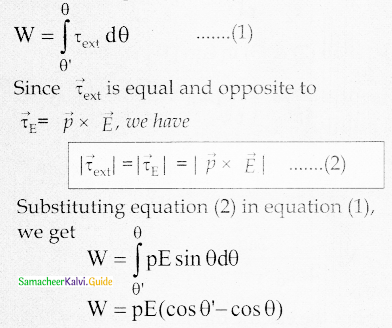
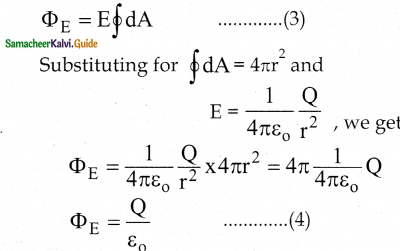
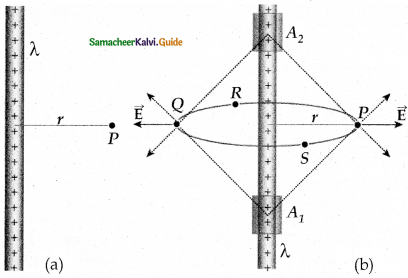
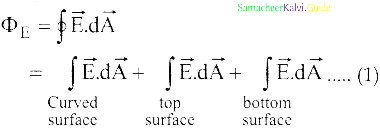
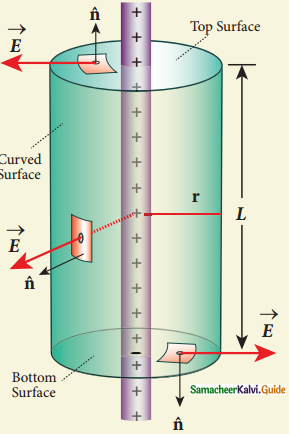
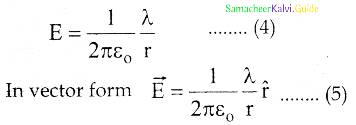
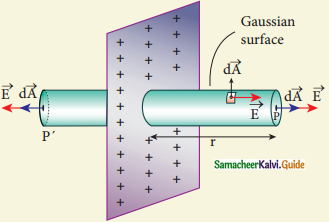

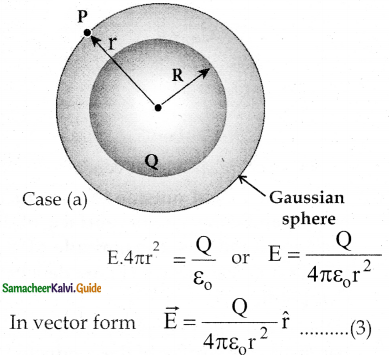
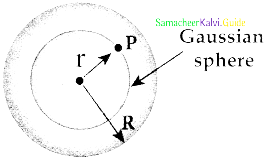
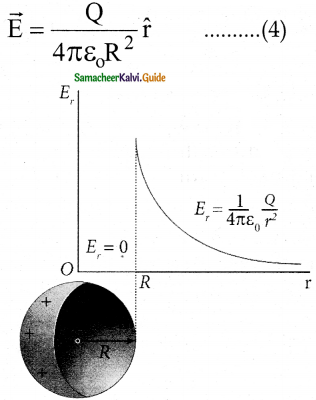
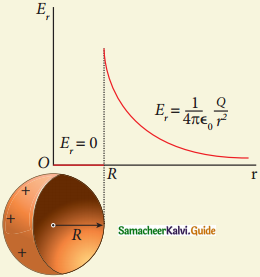 Electric field versus distance for a spherical shell of radius R
Electric field versus distance for a spherical shell of radius R
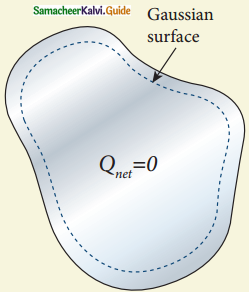 No net charge inside the conductor
No net charge inside the conductor